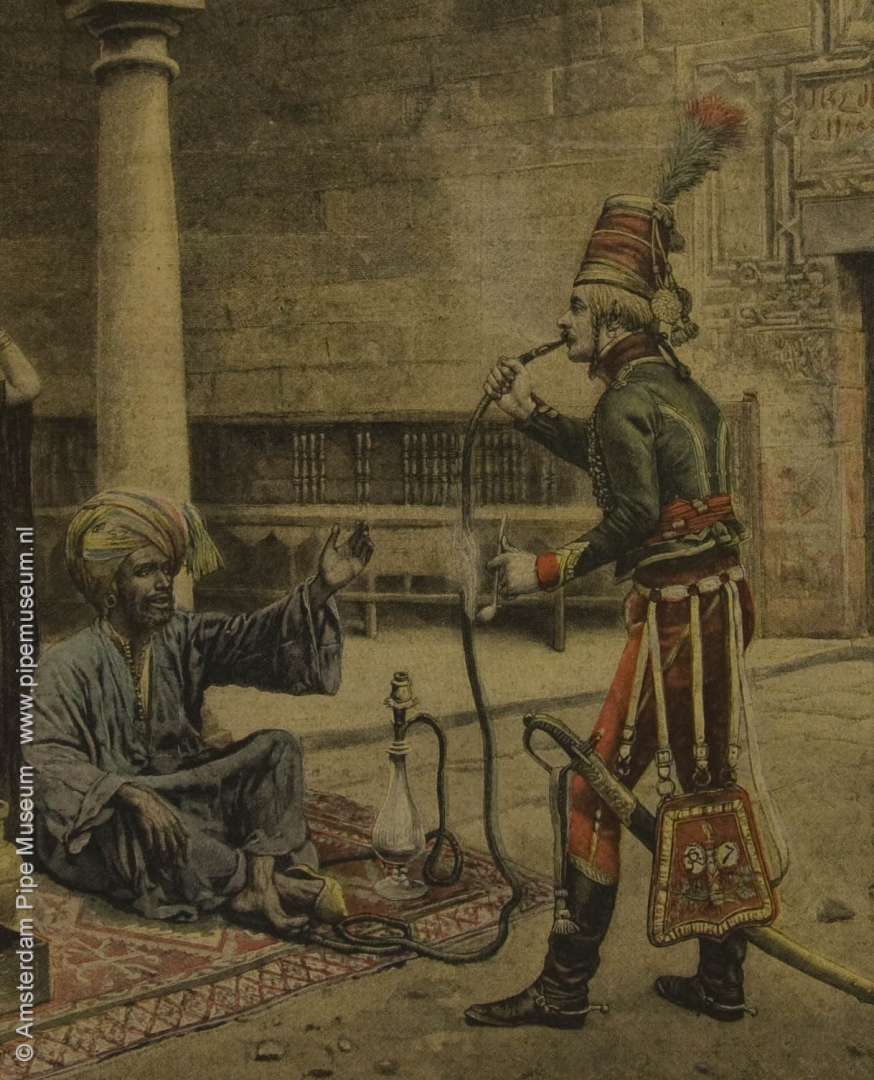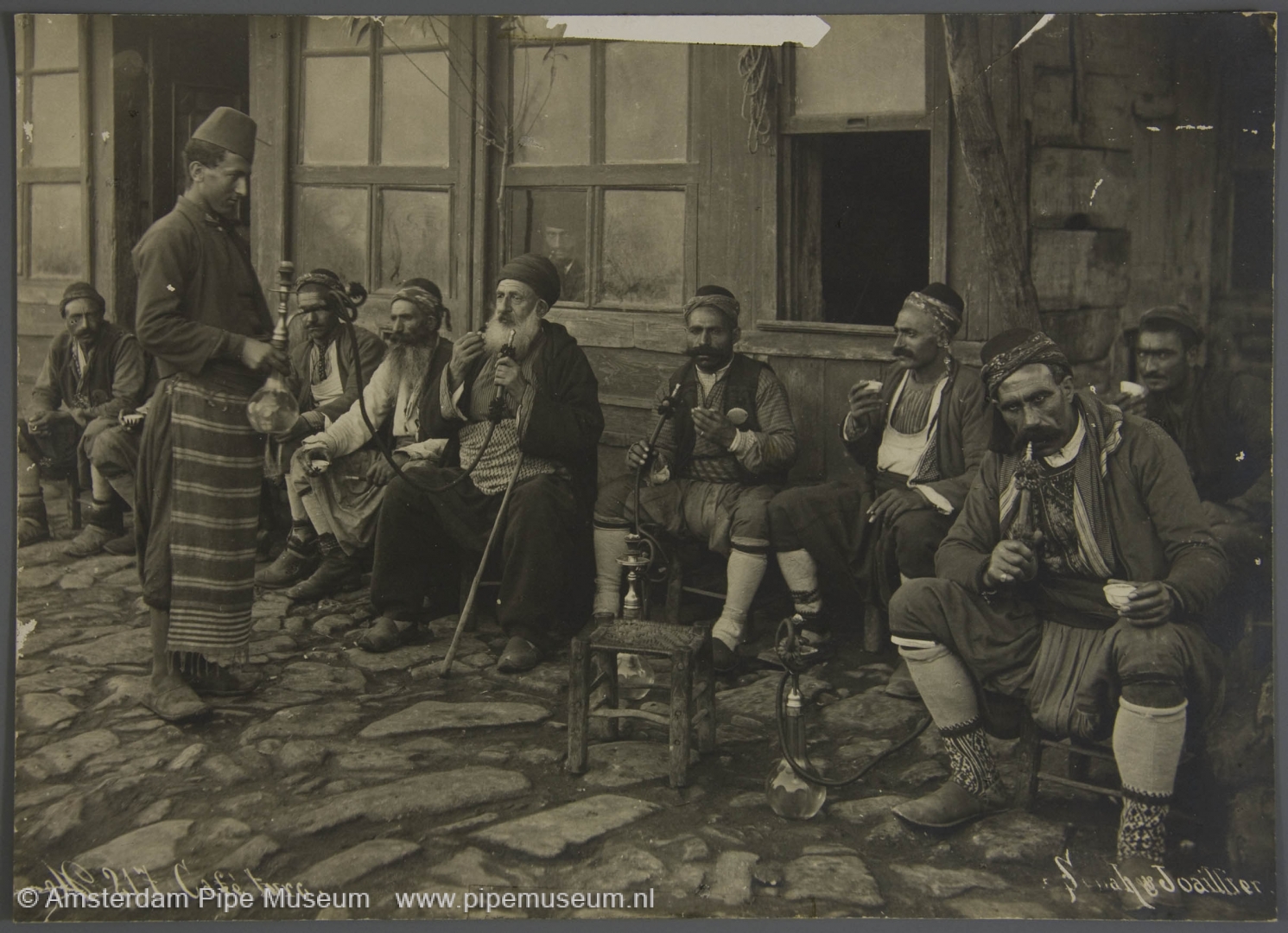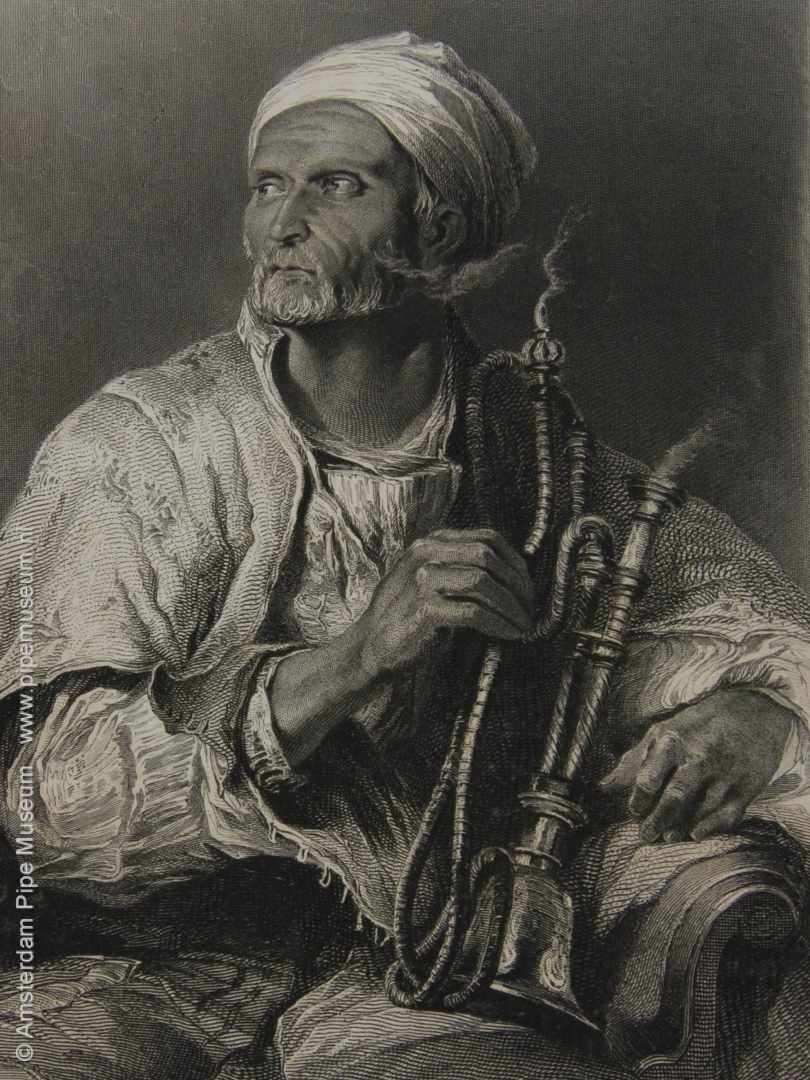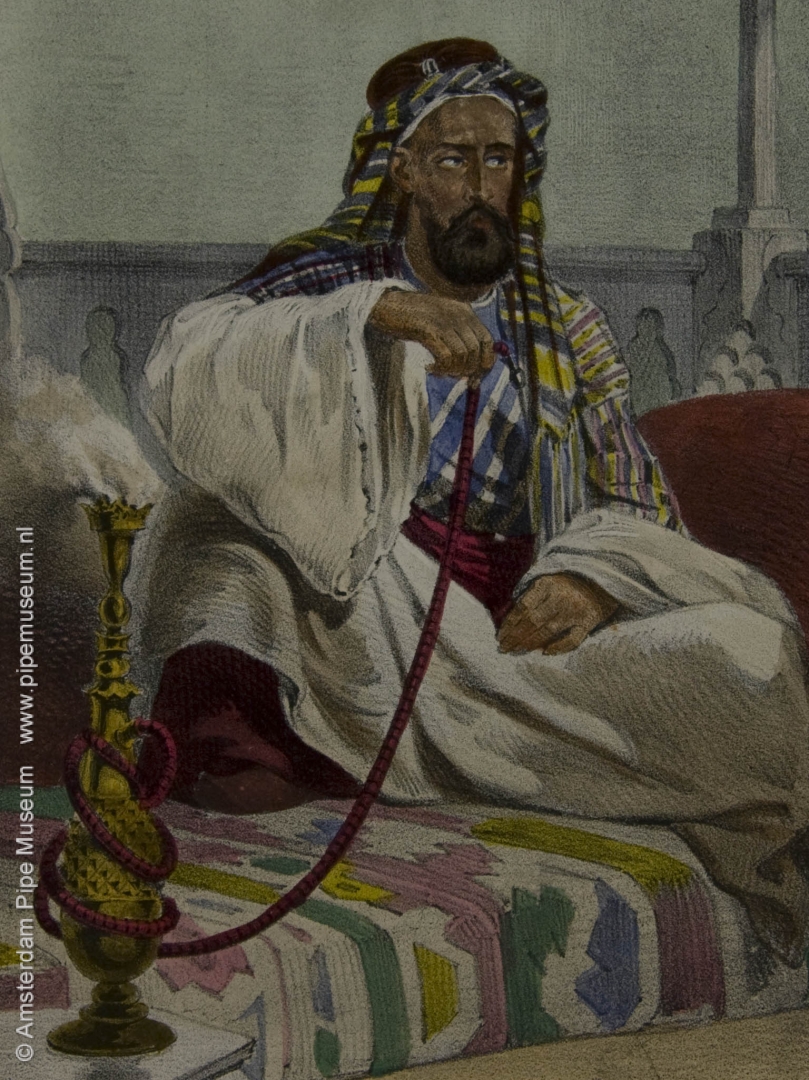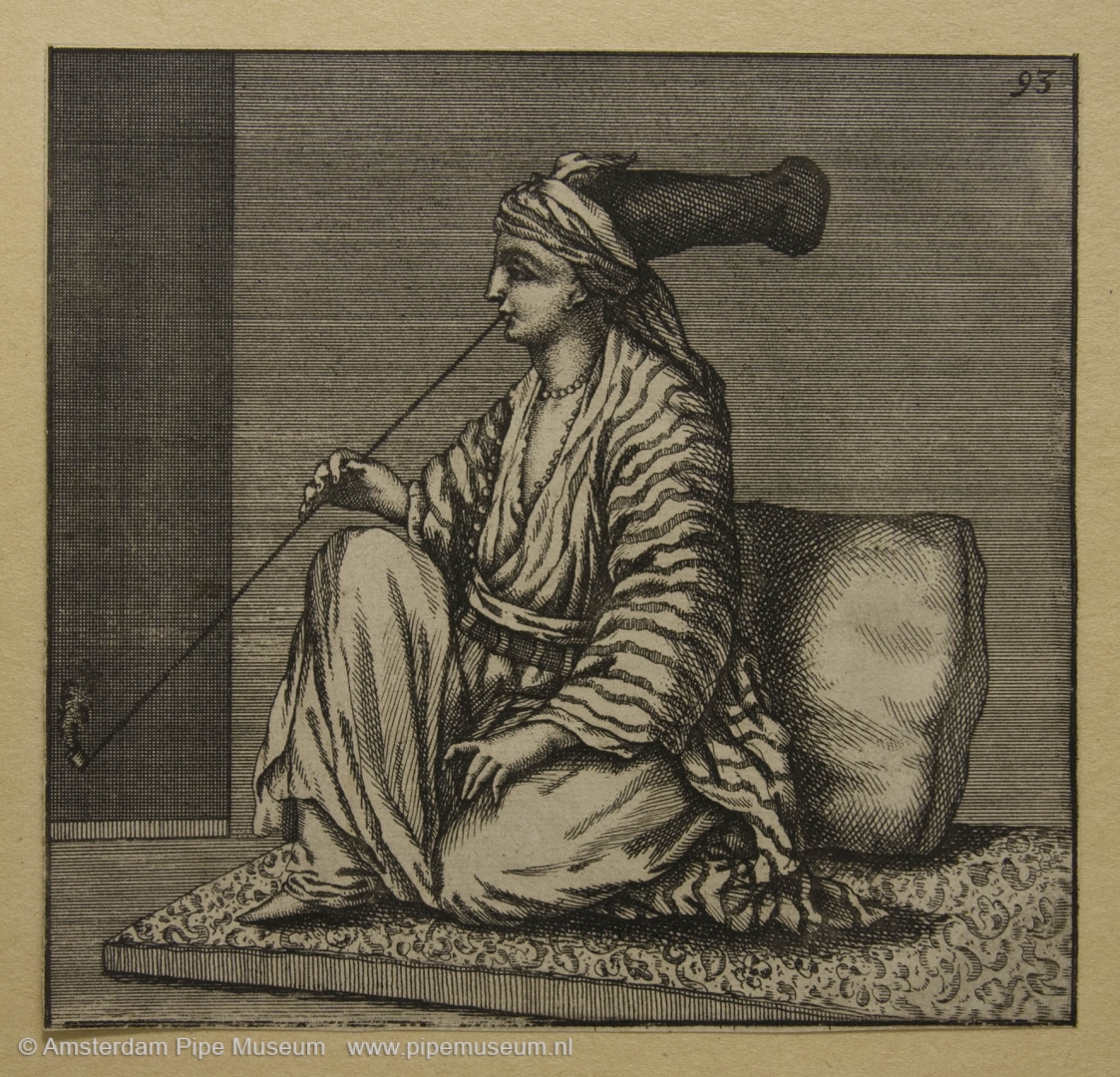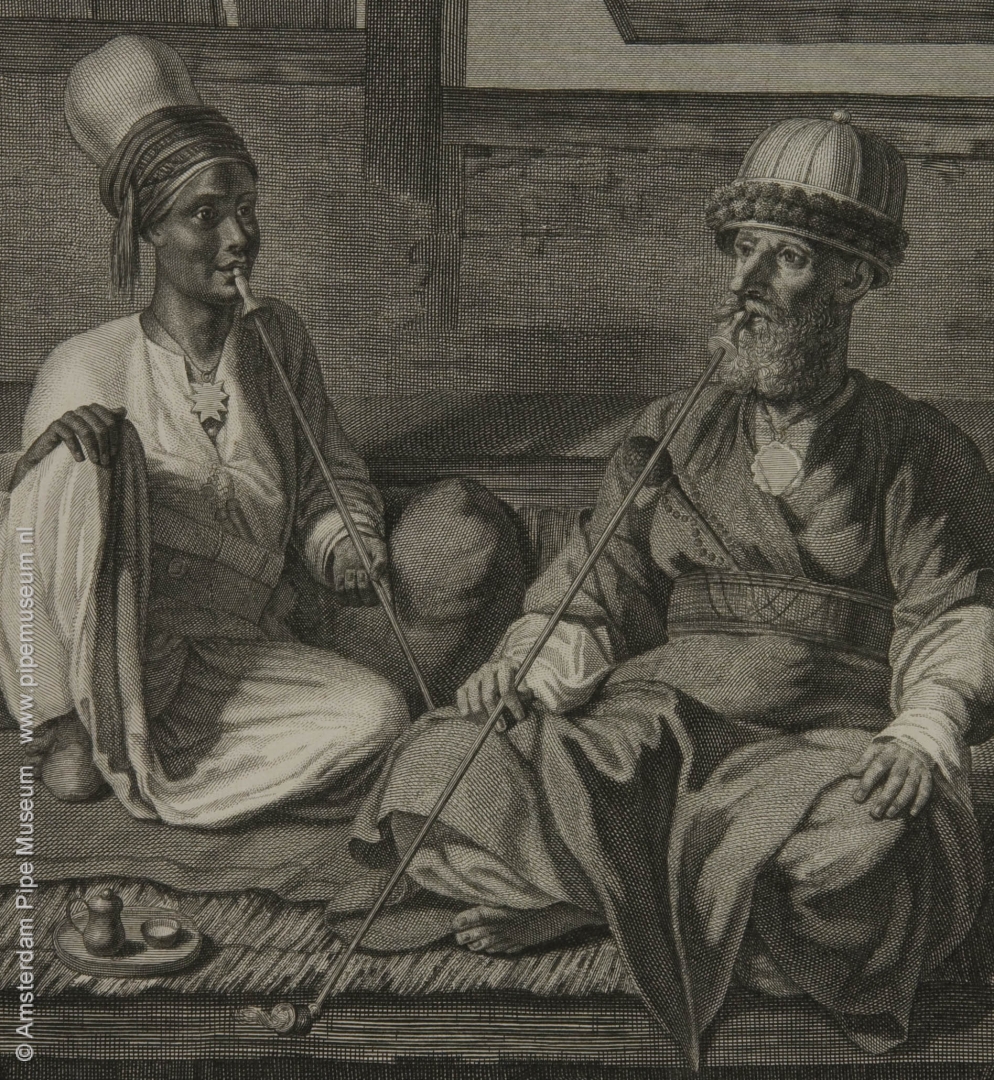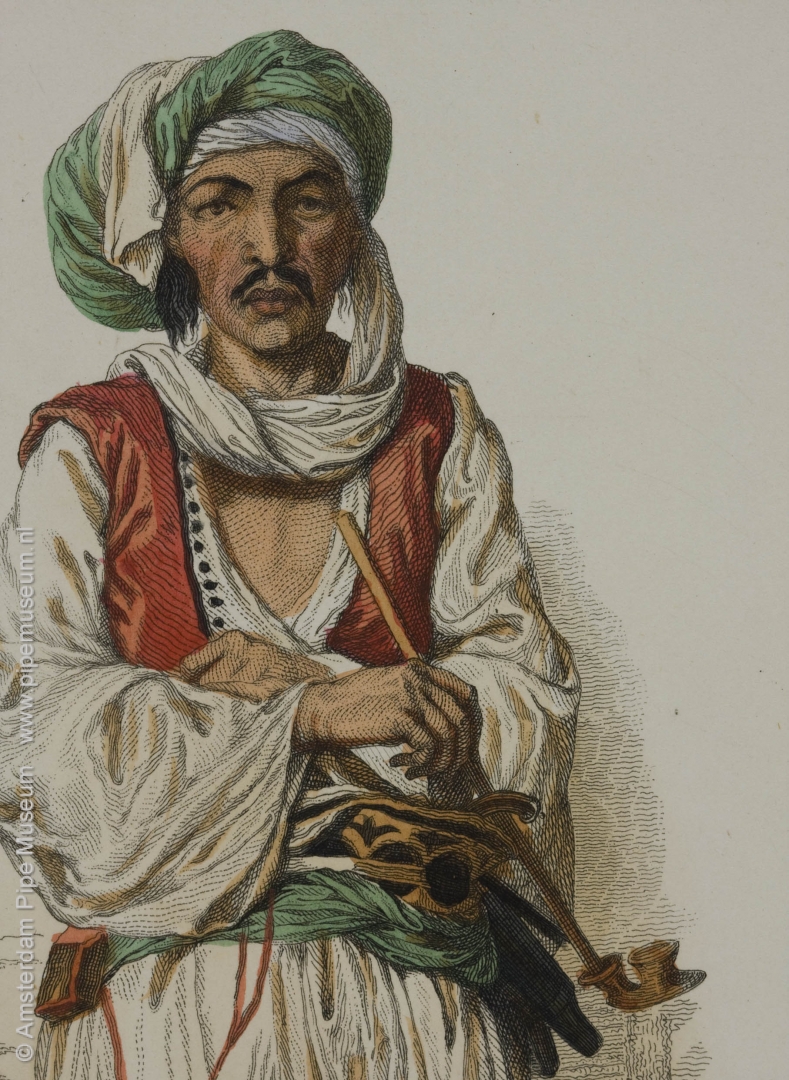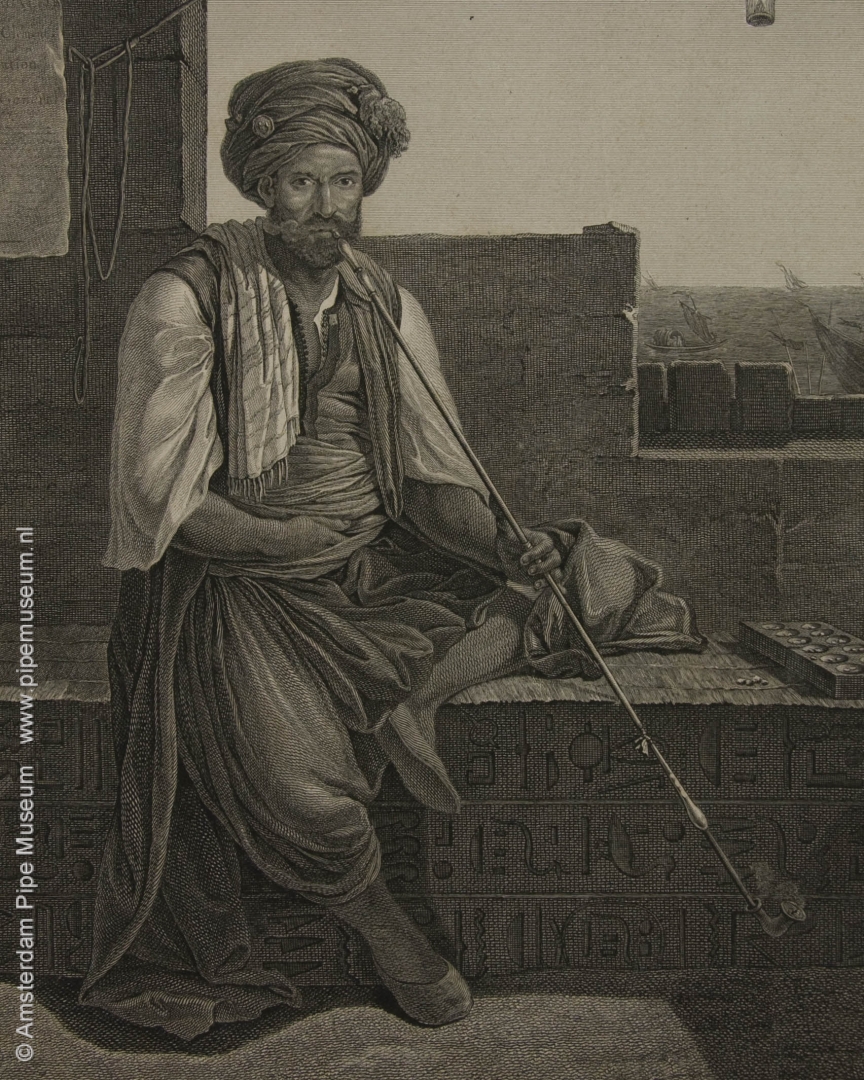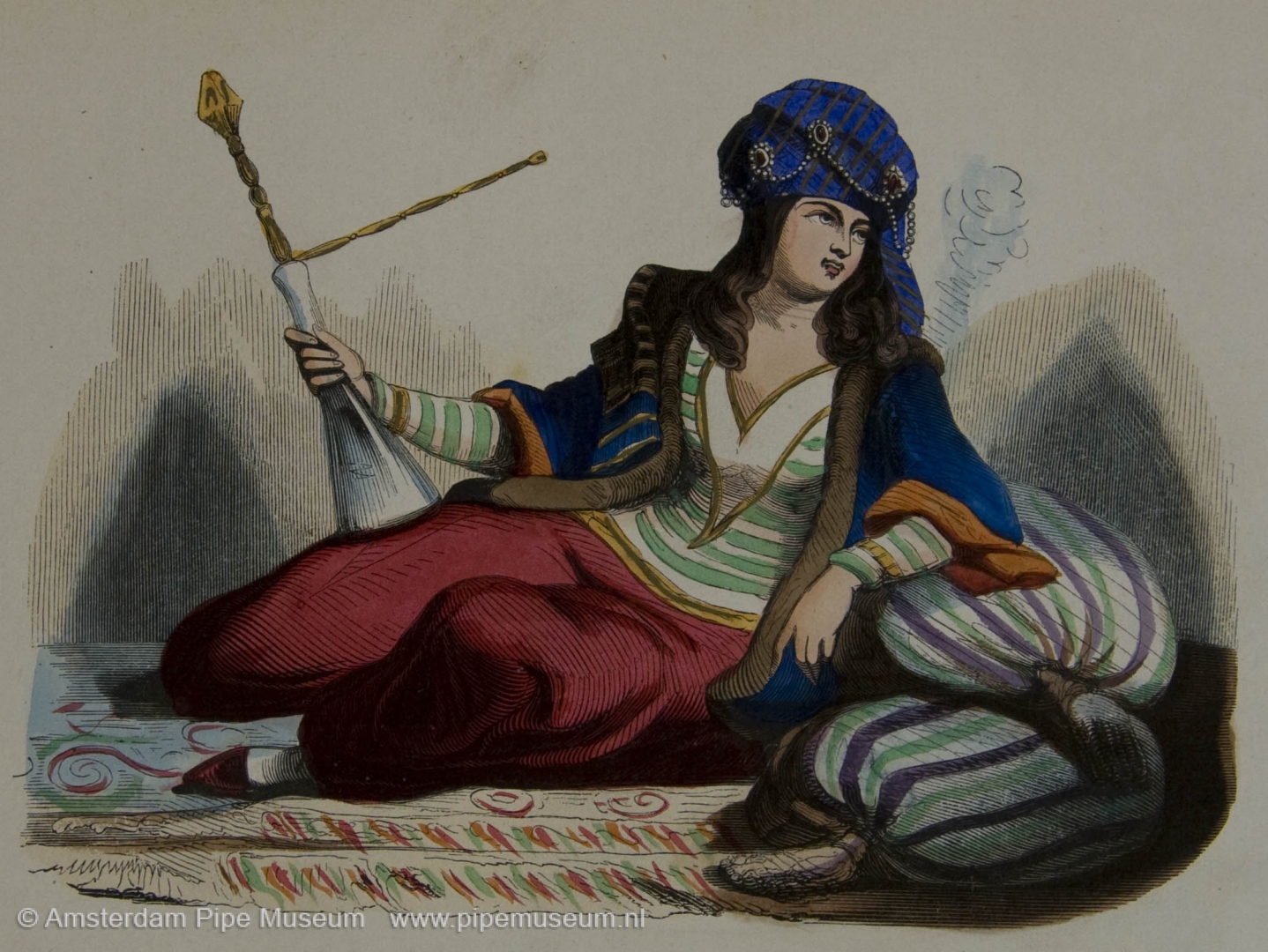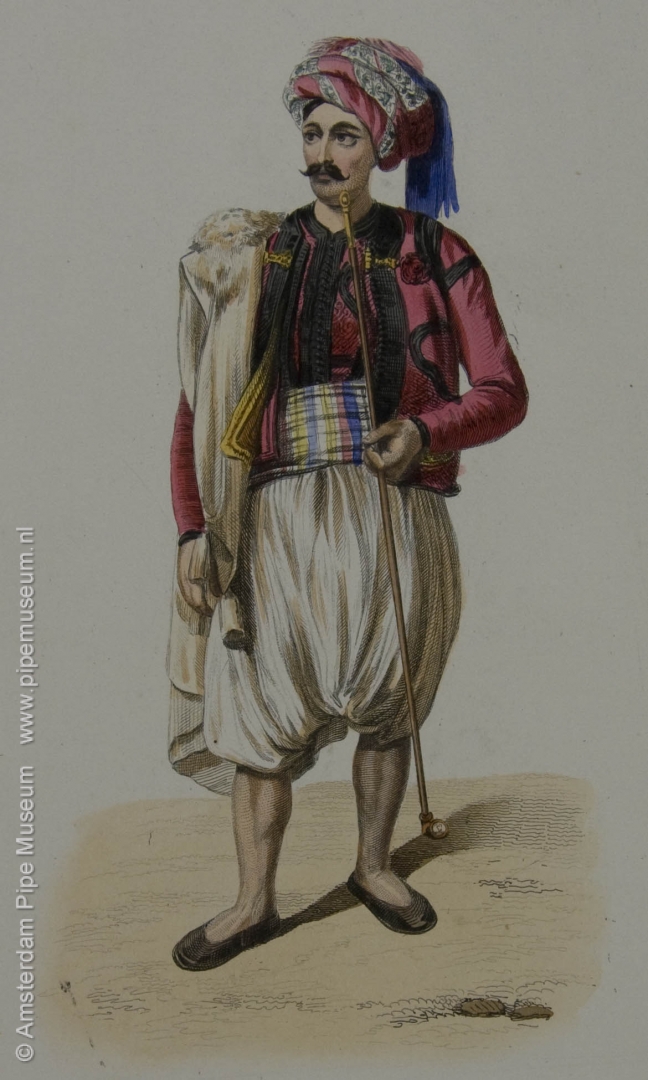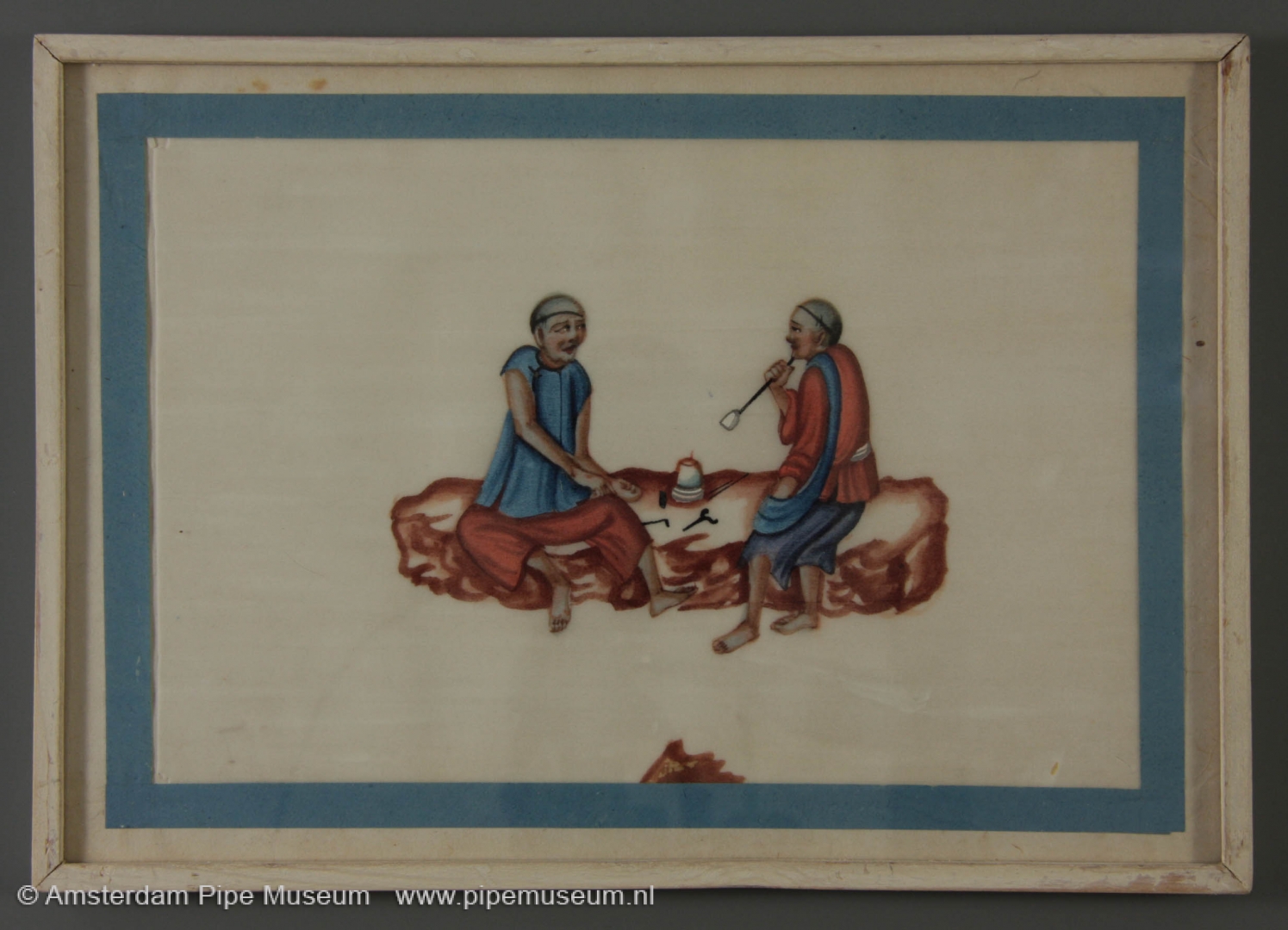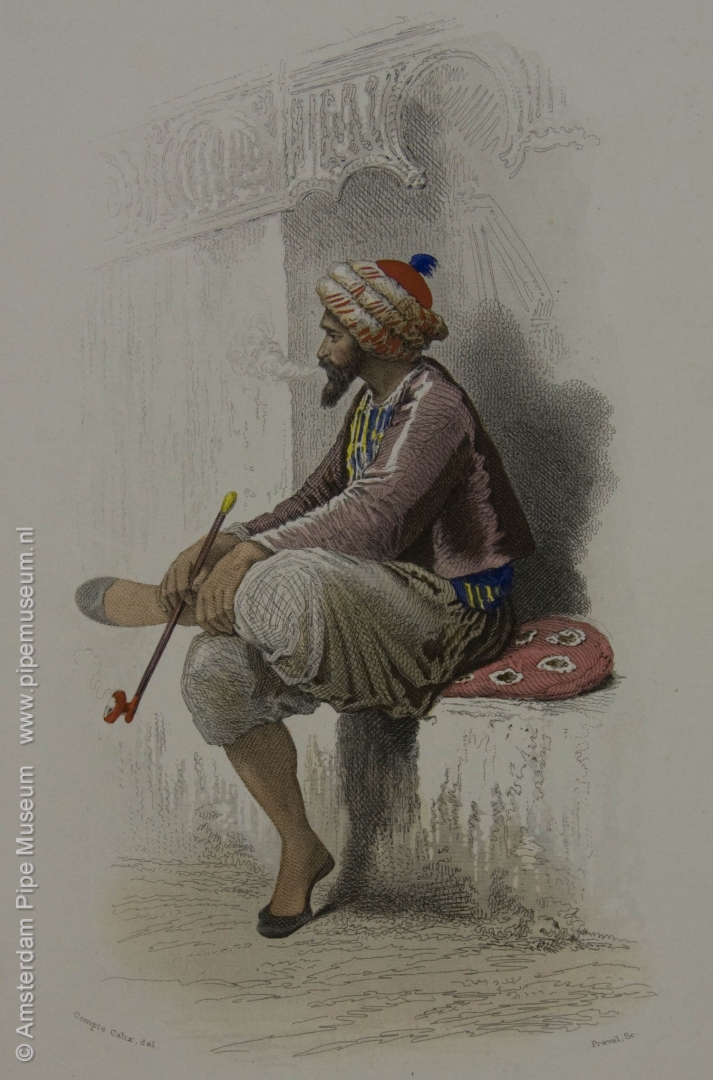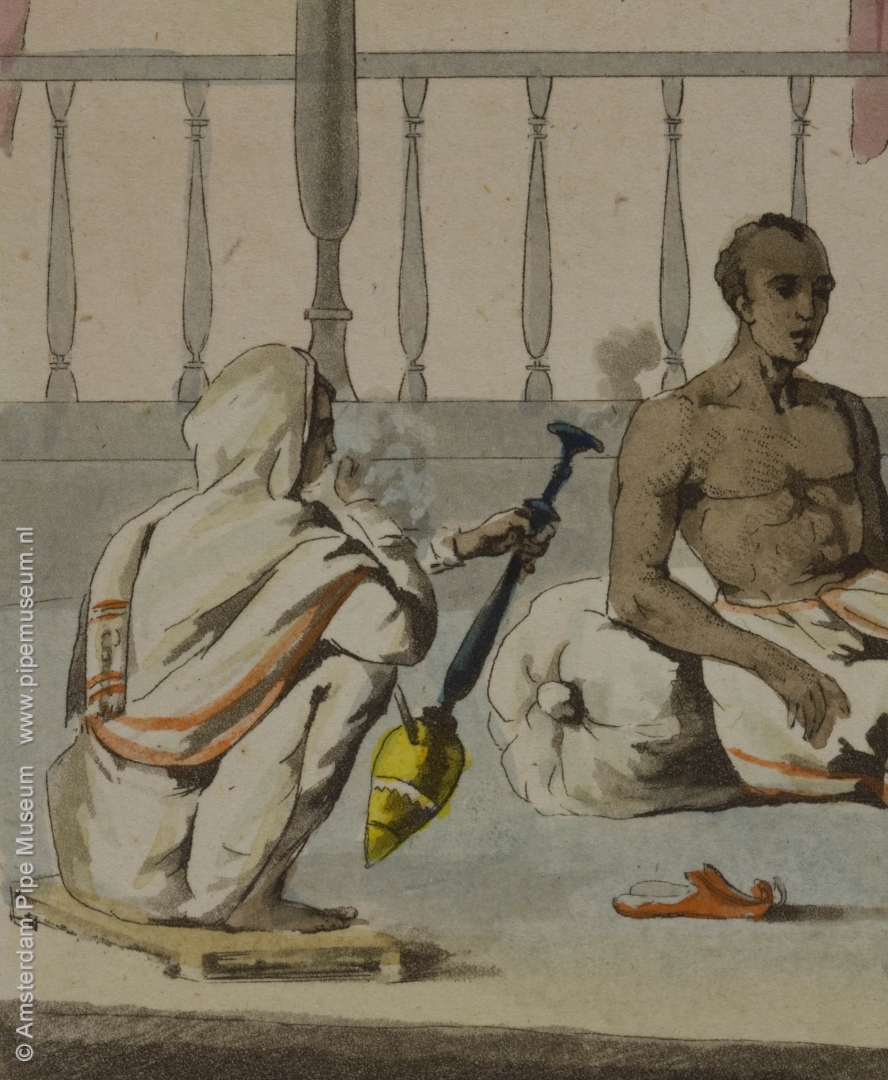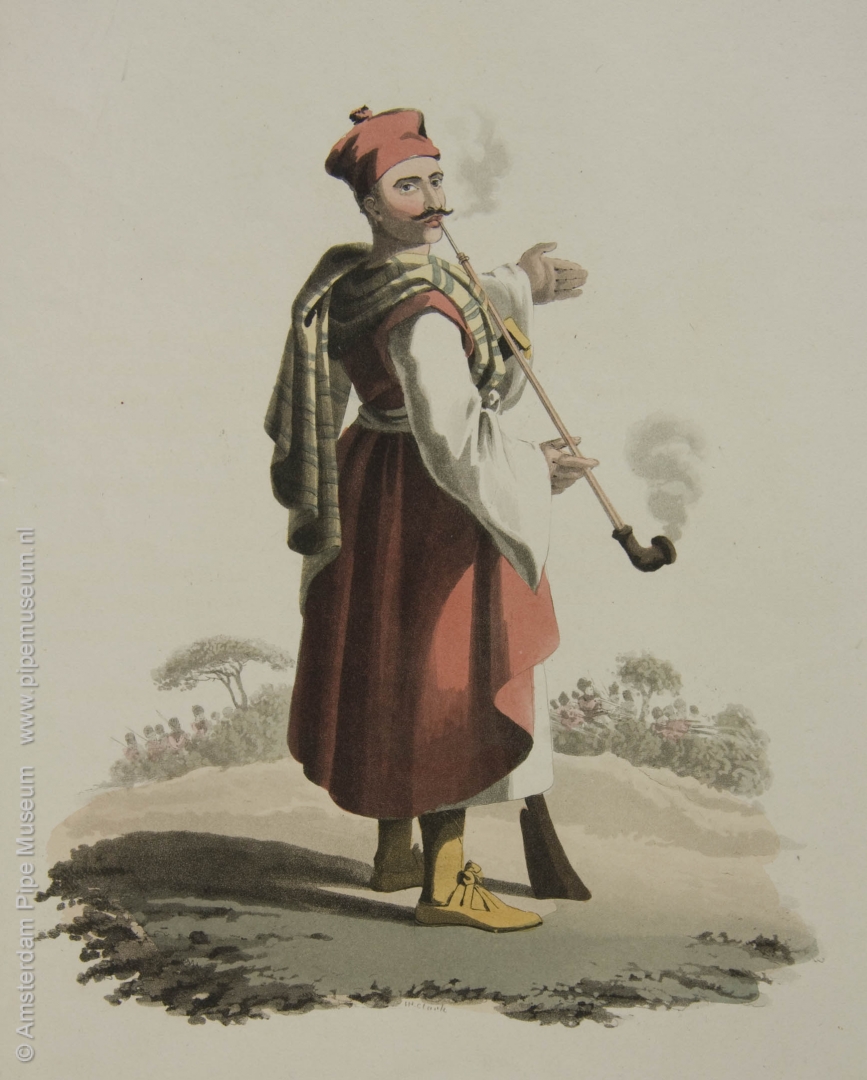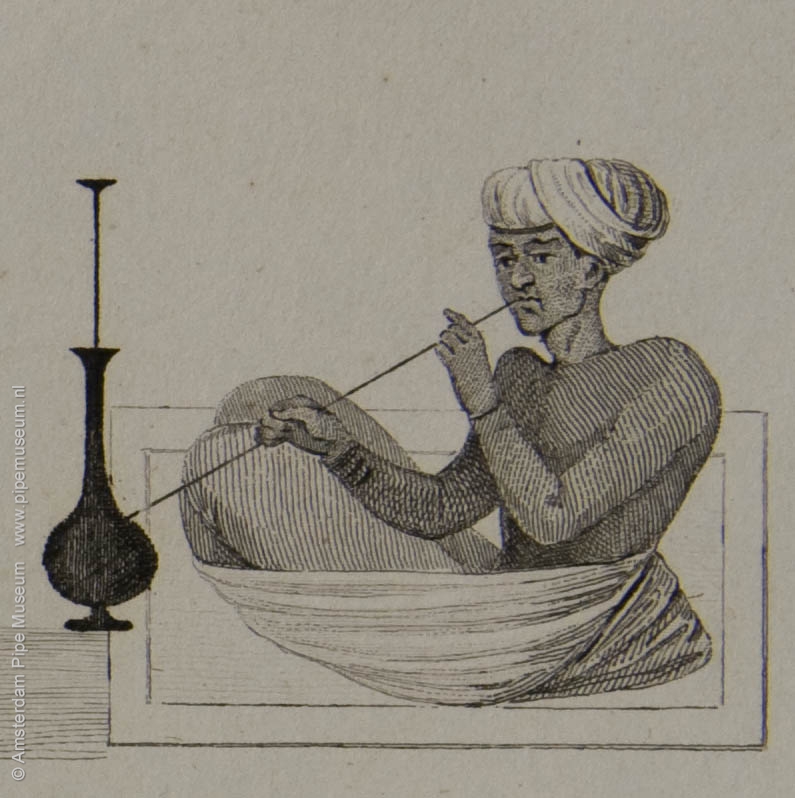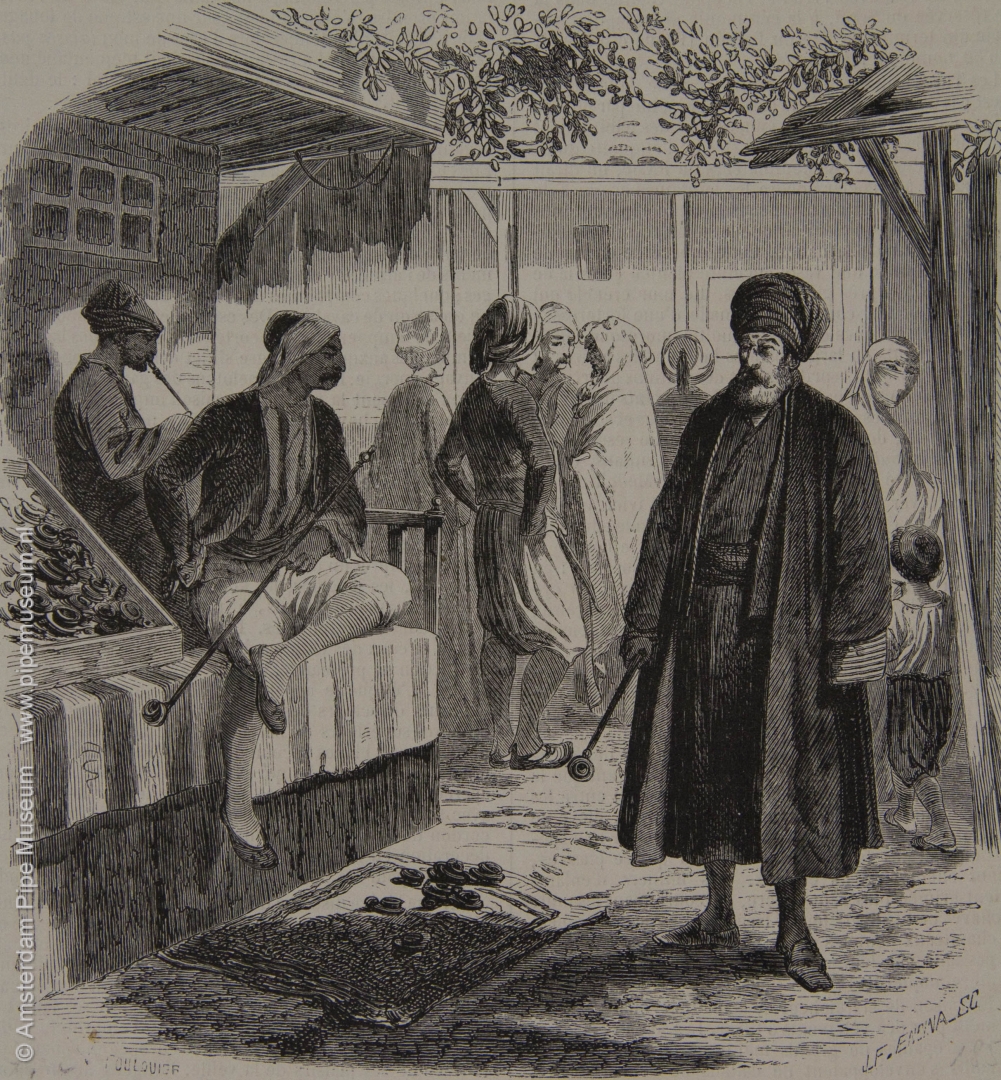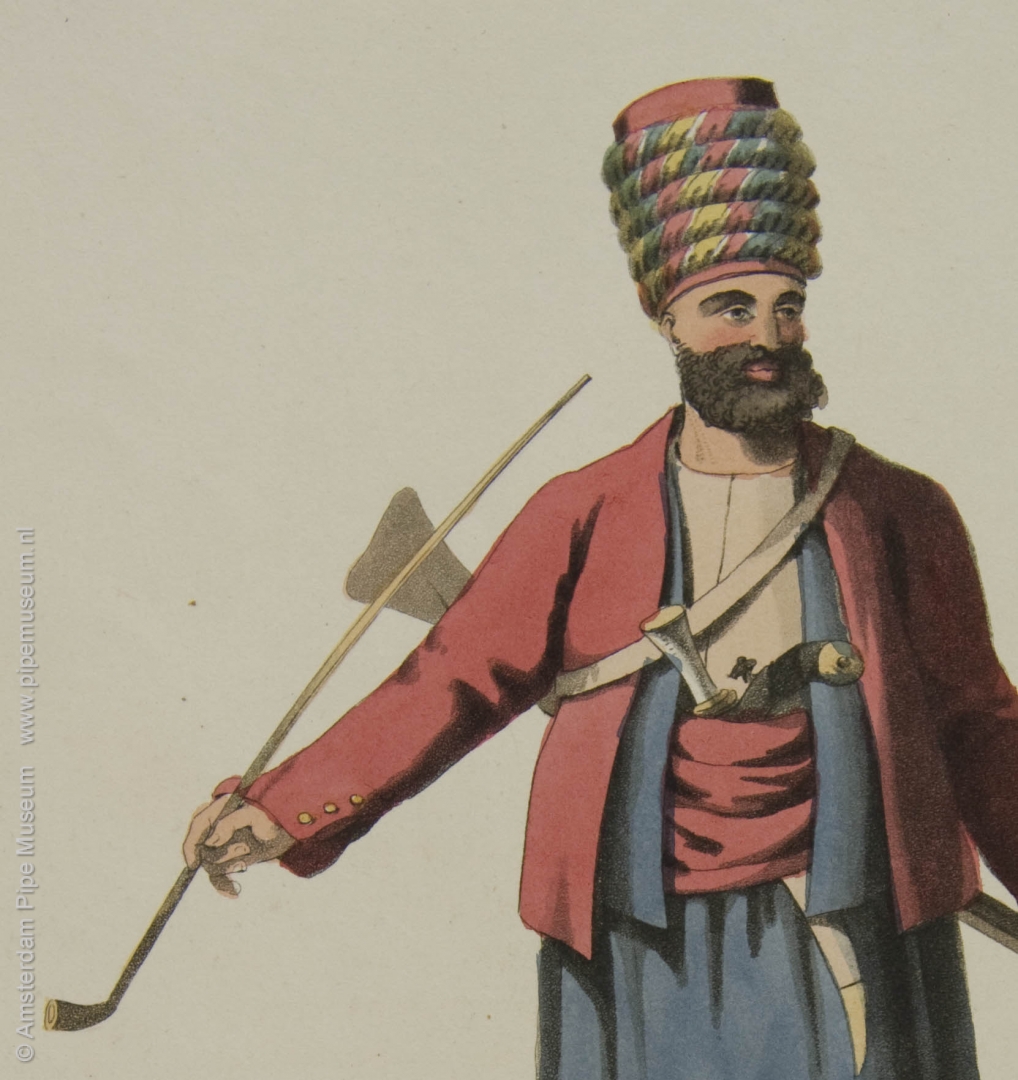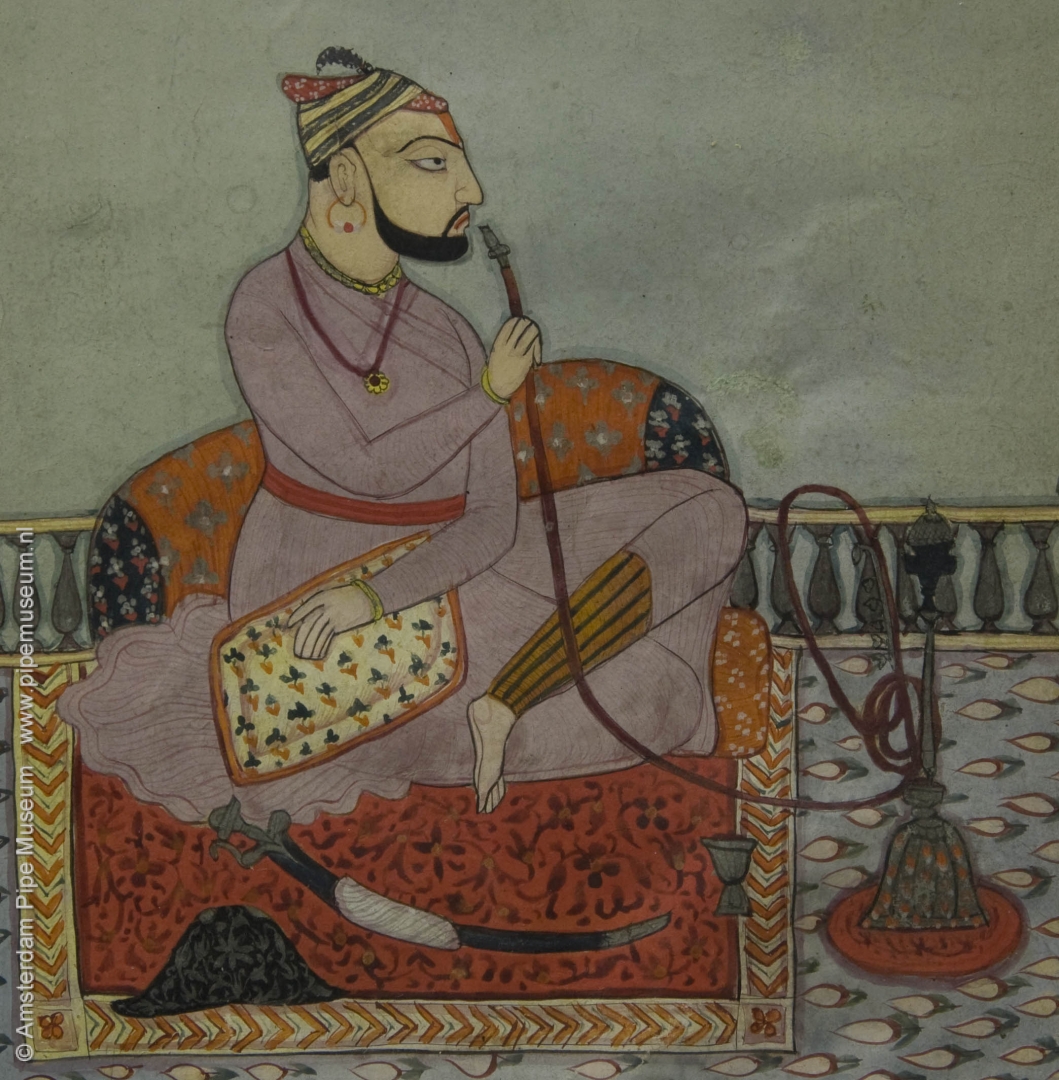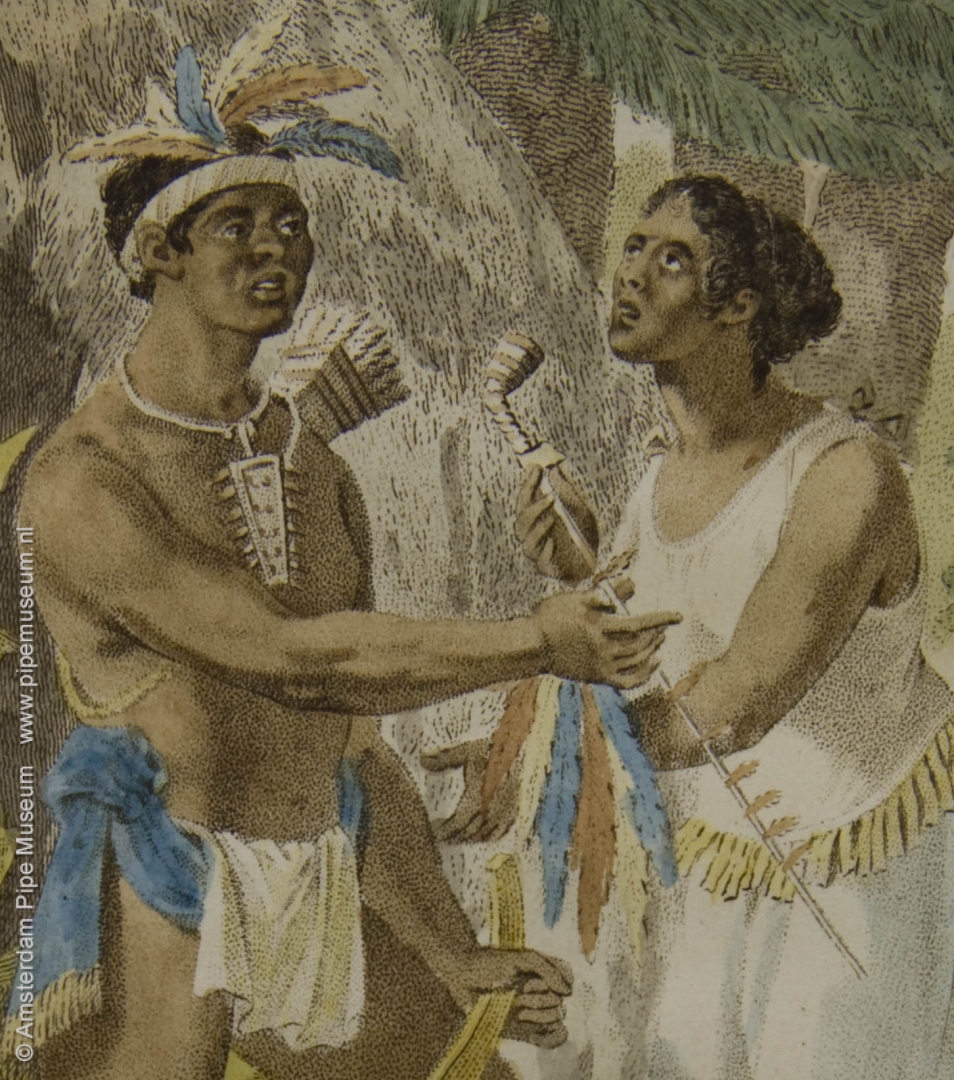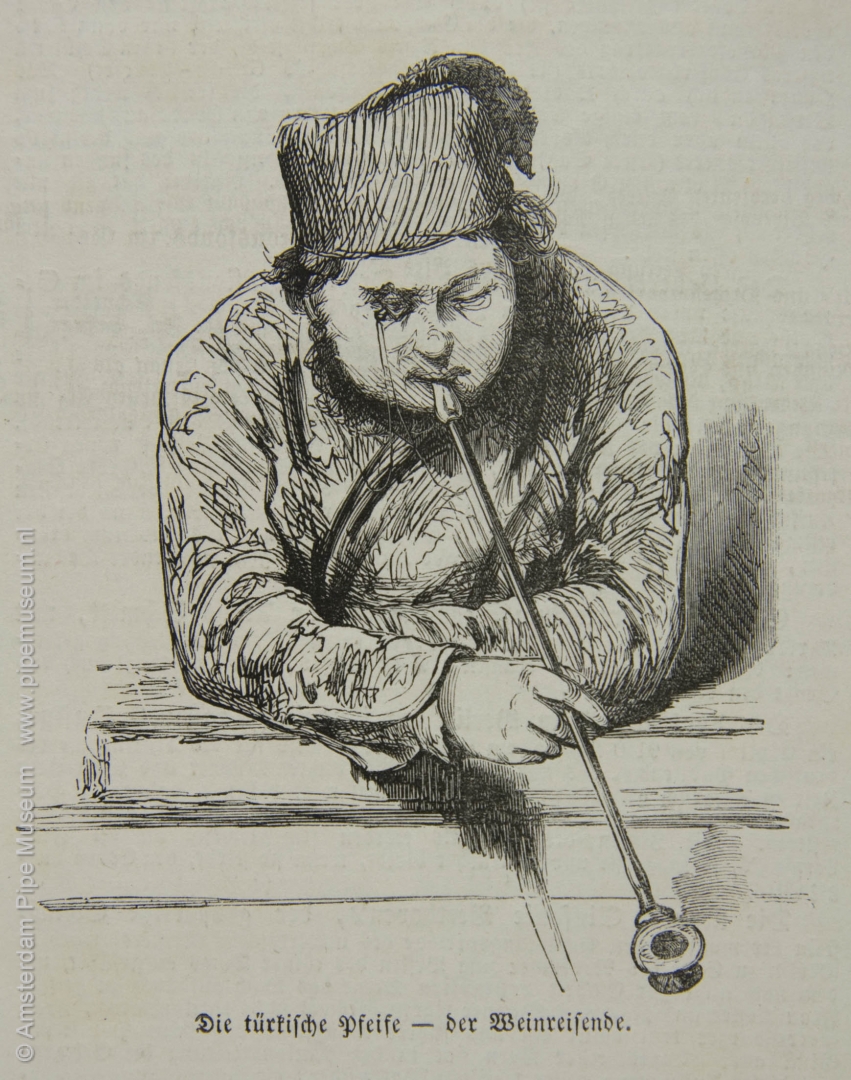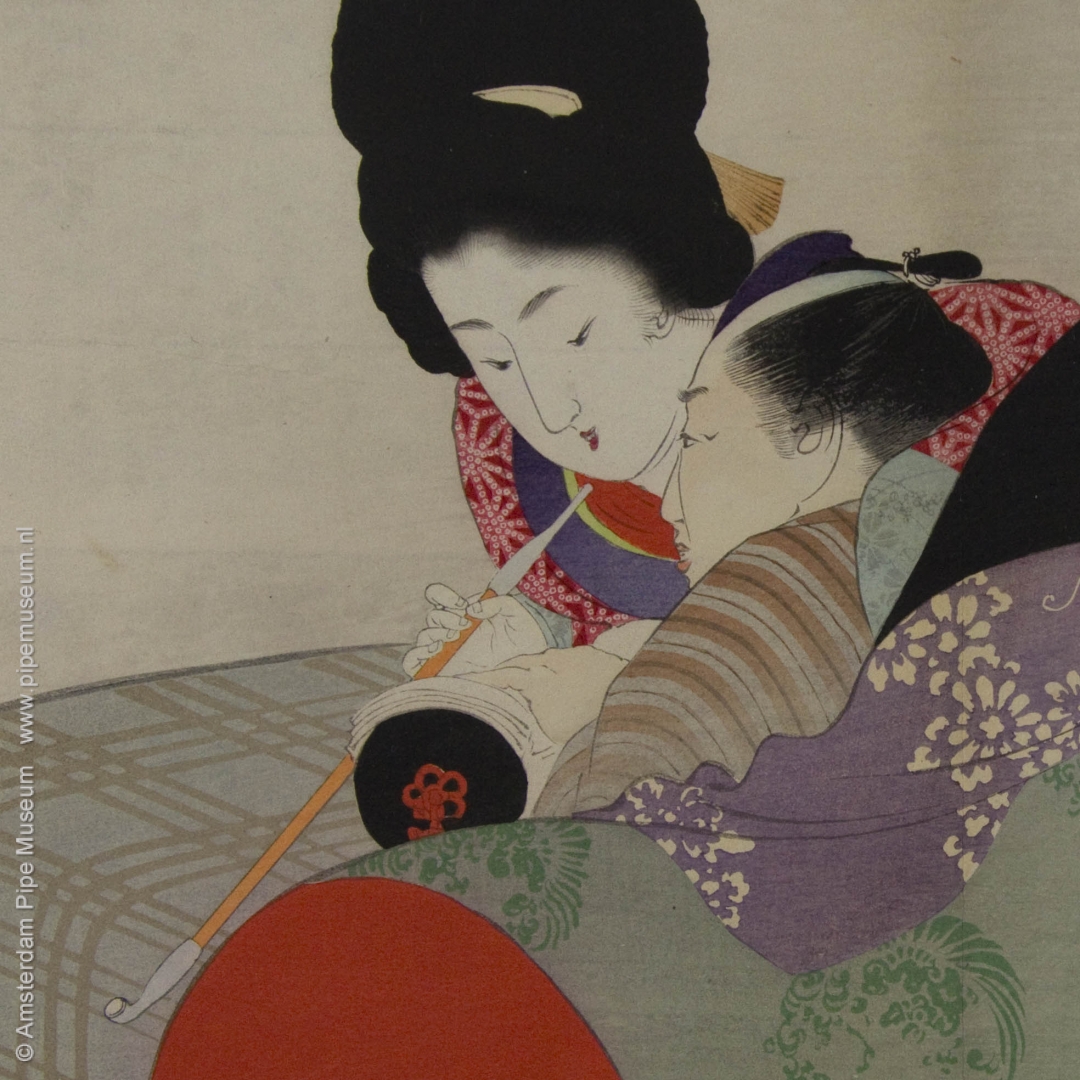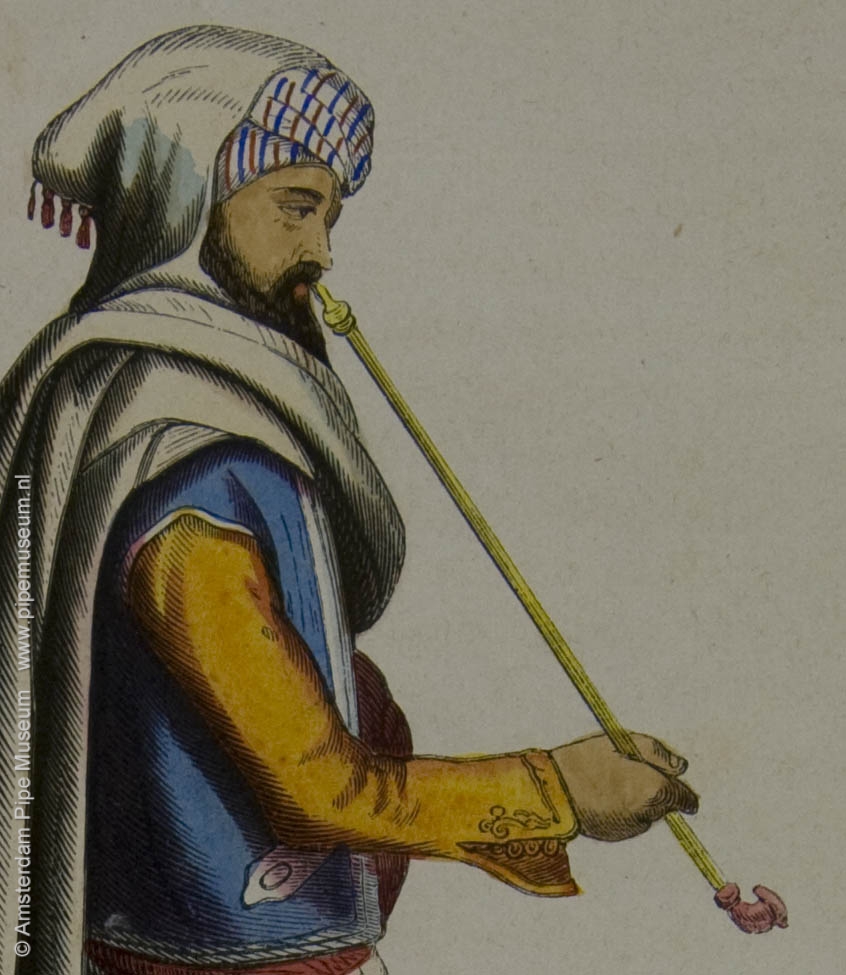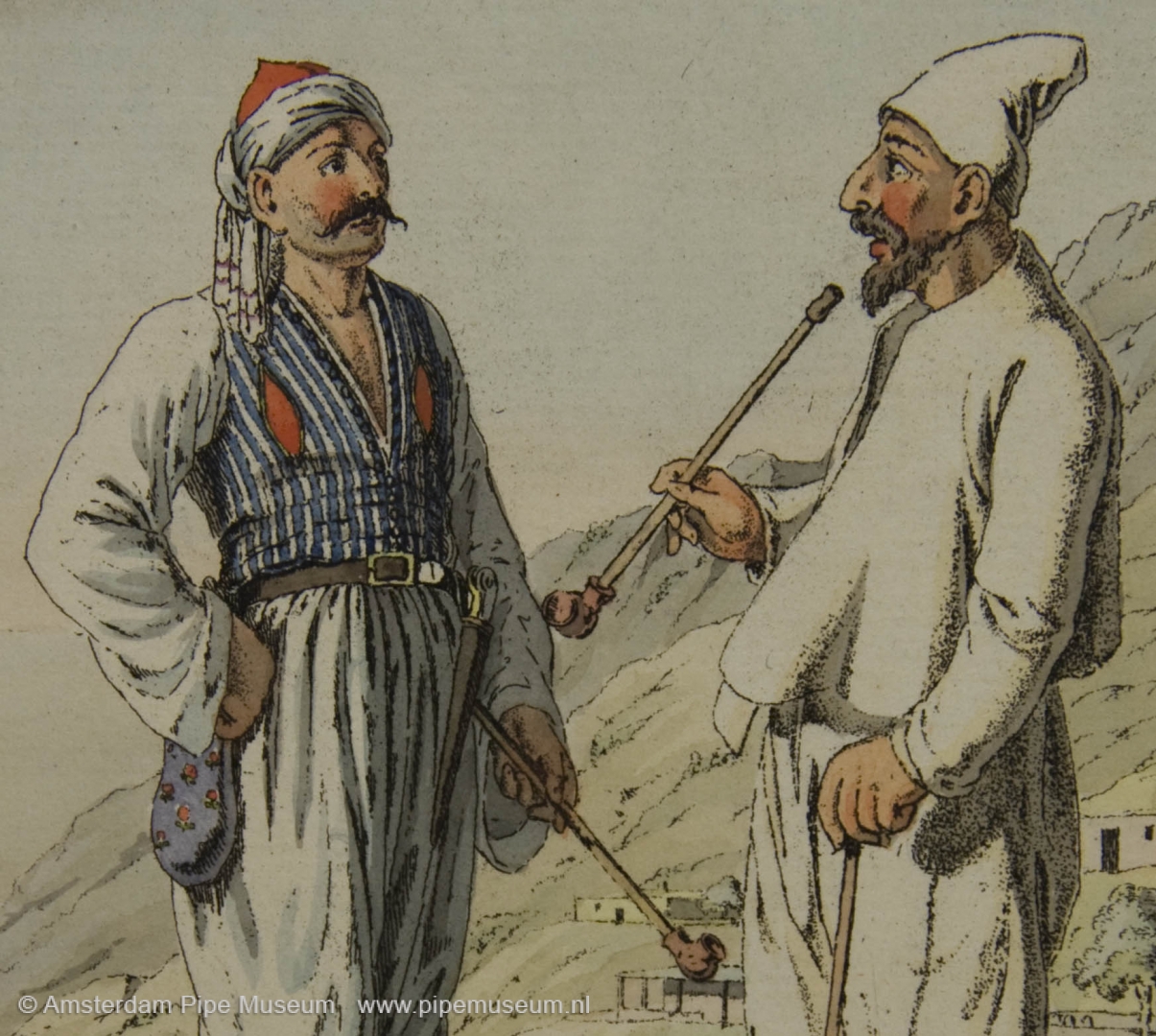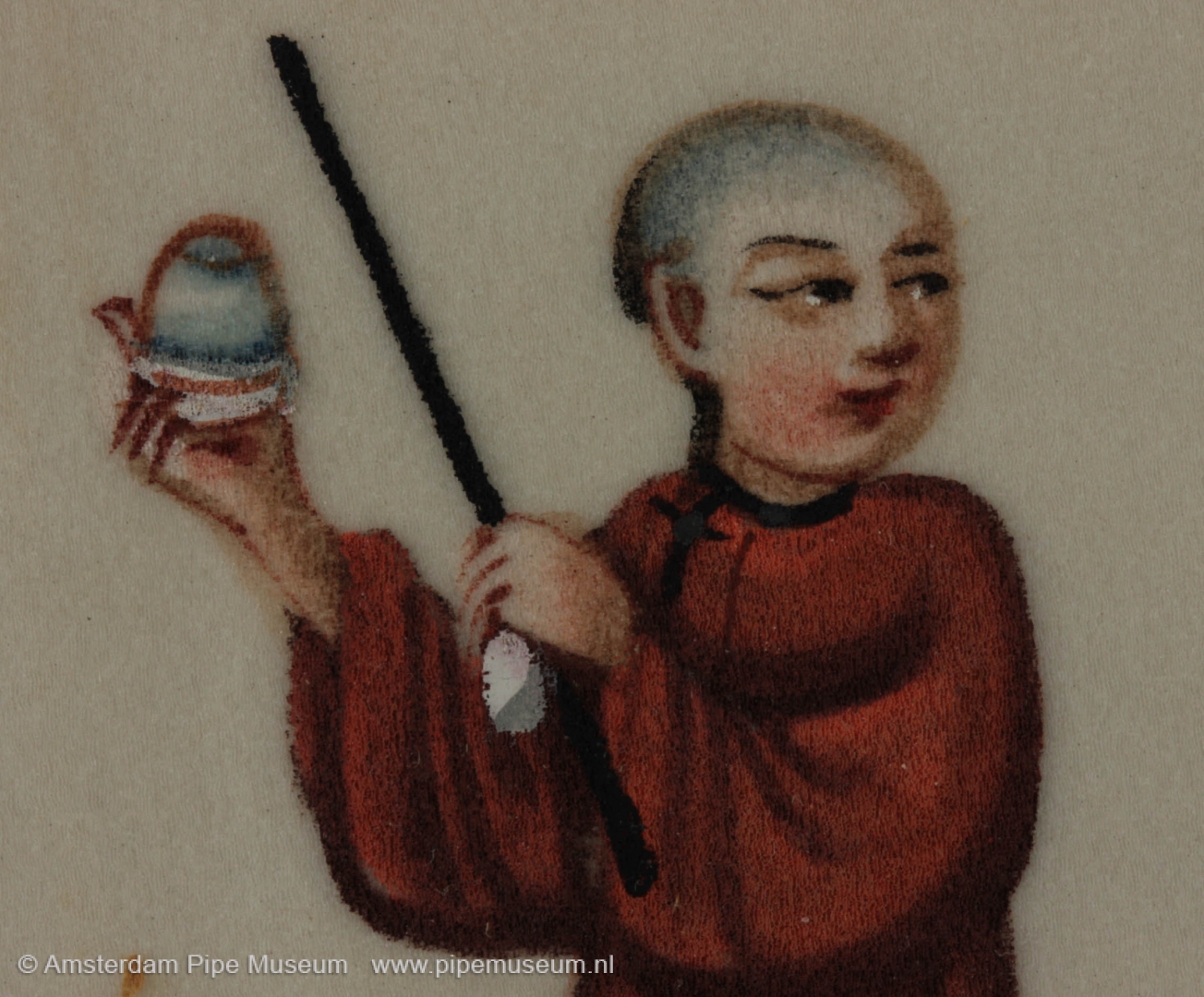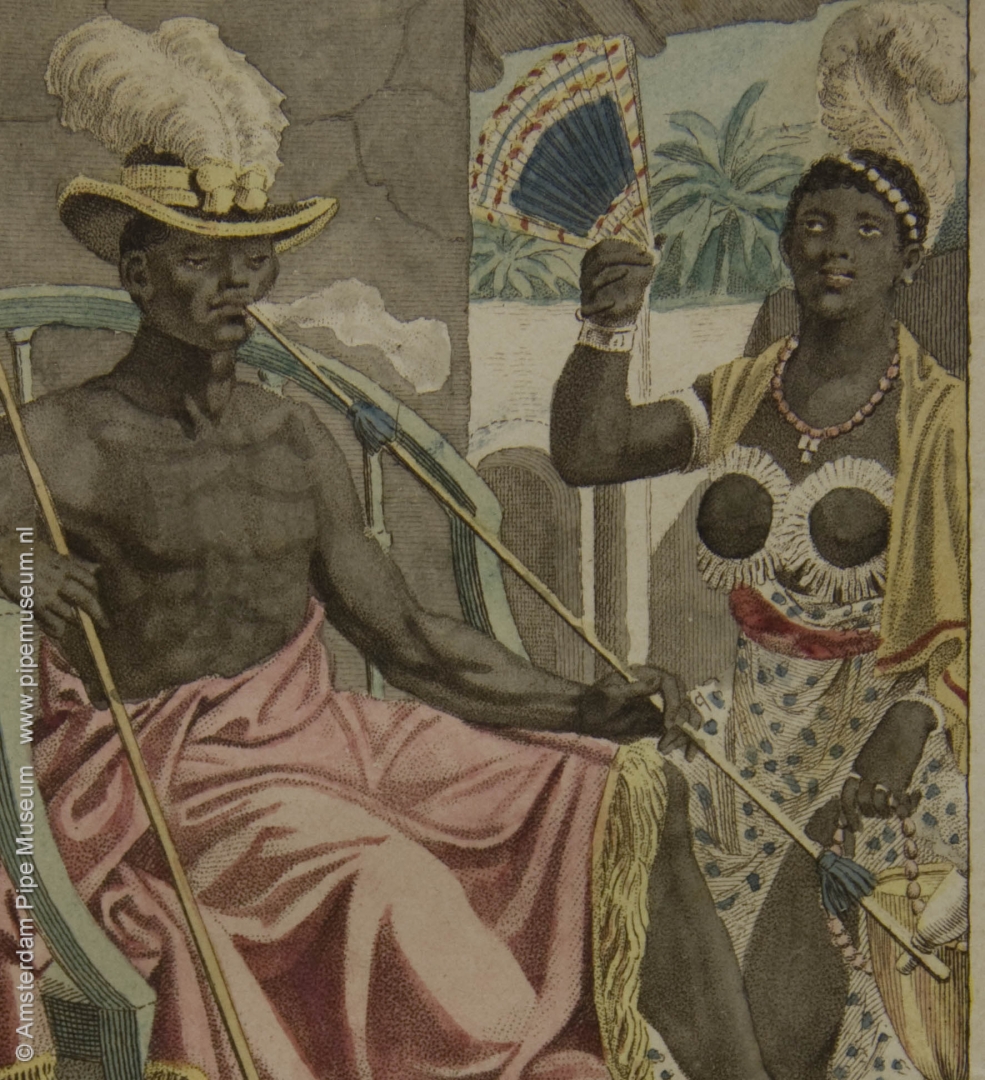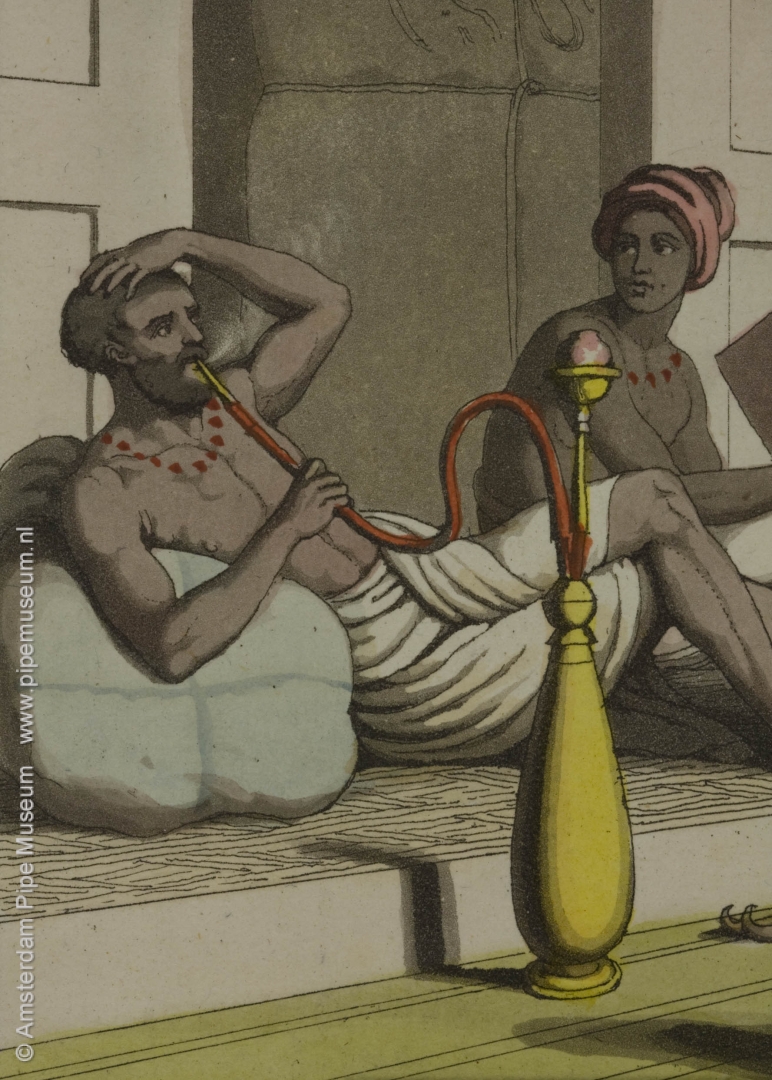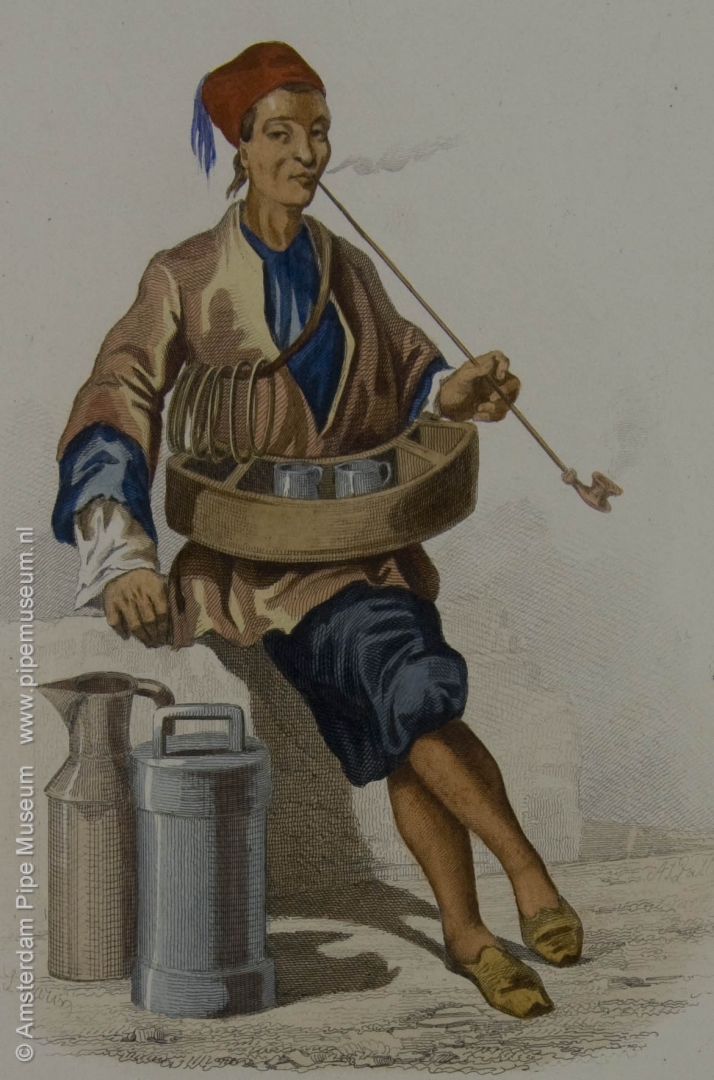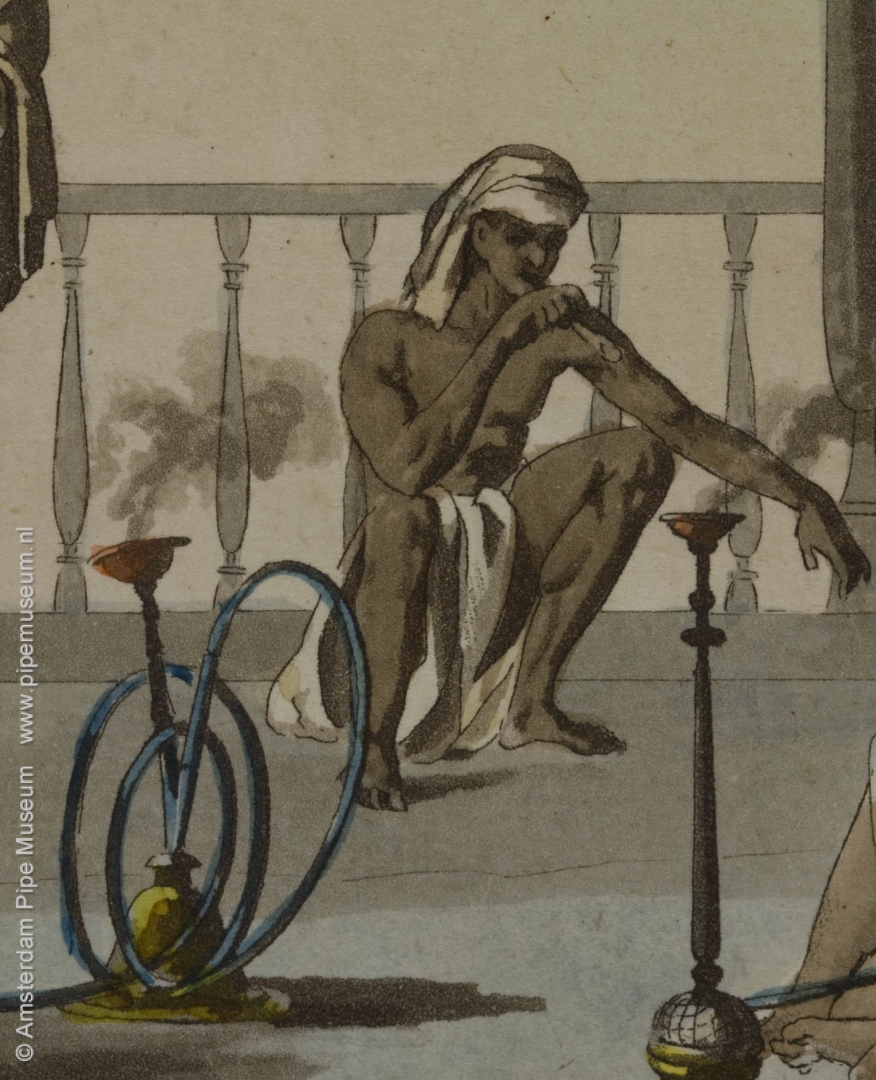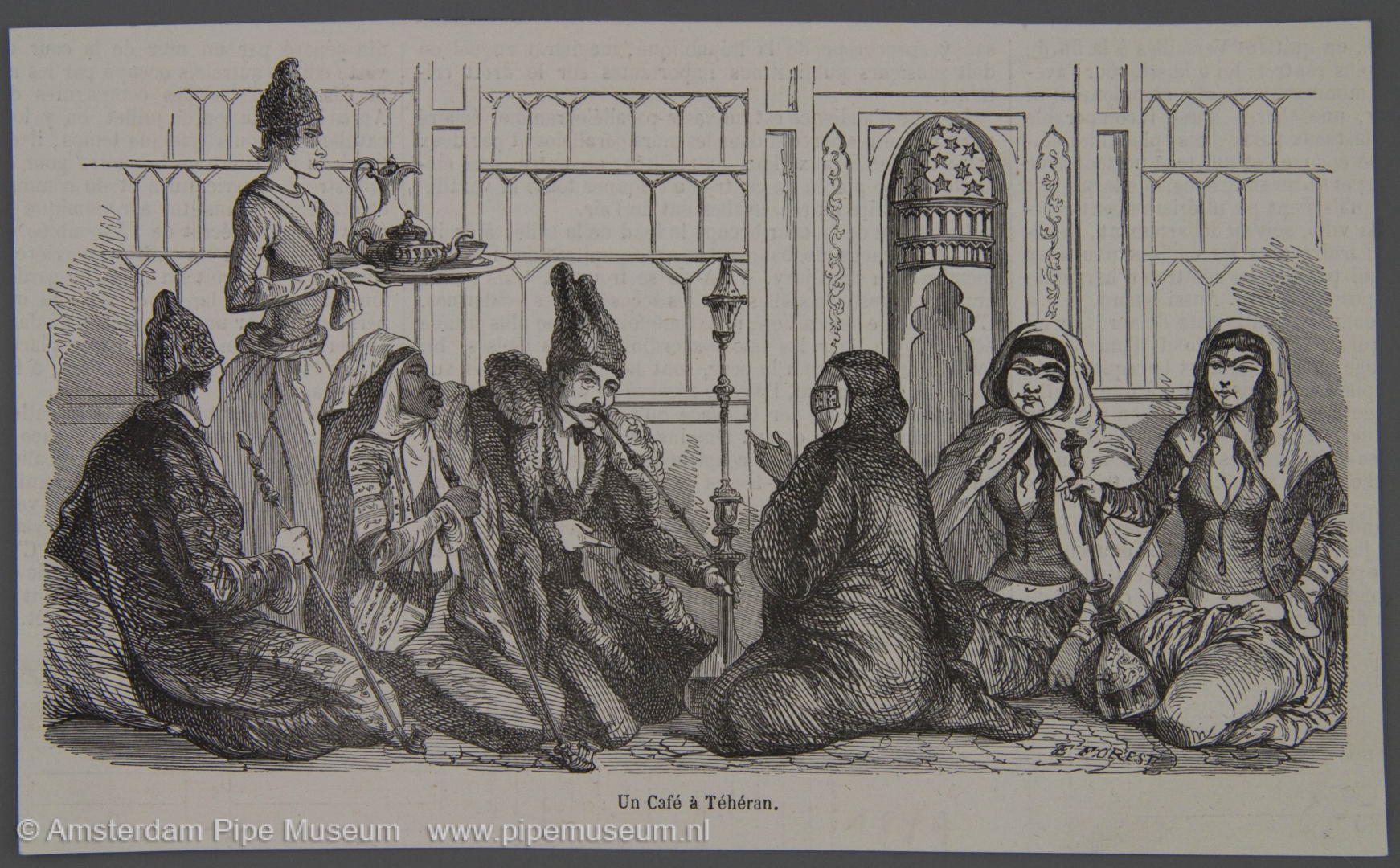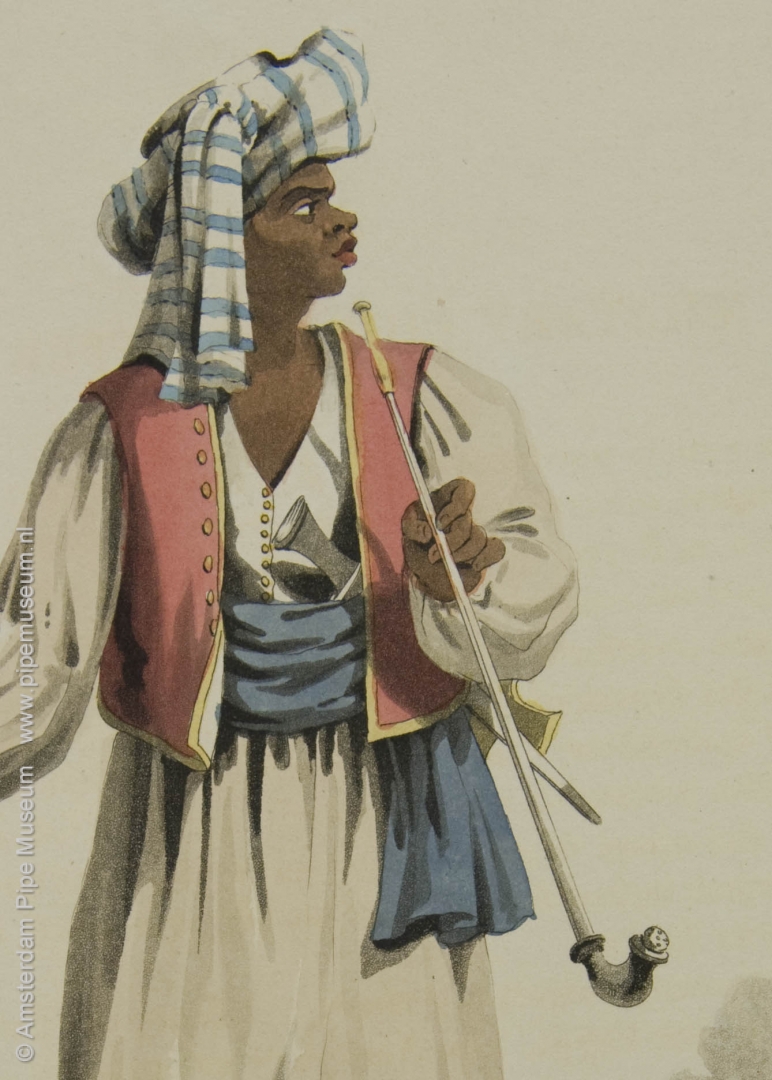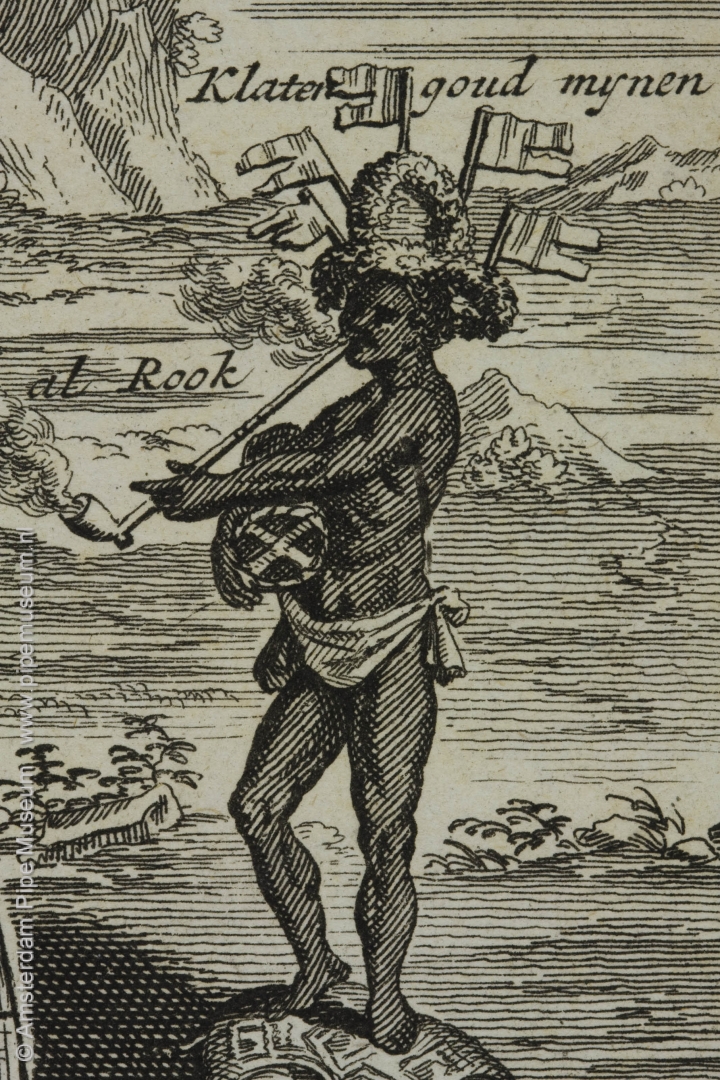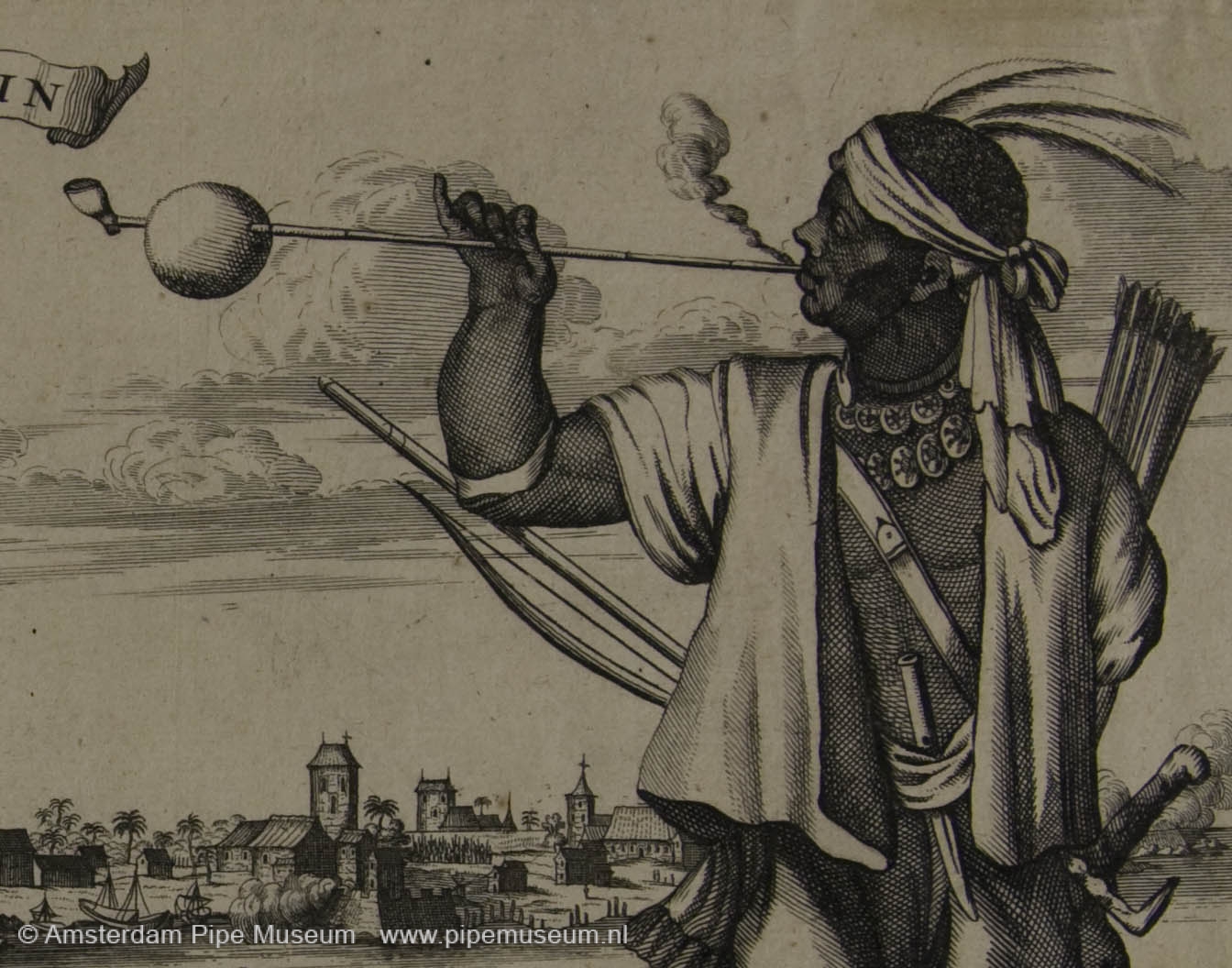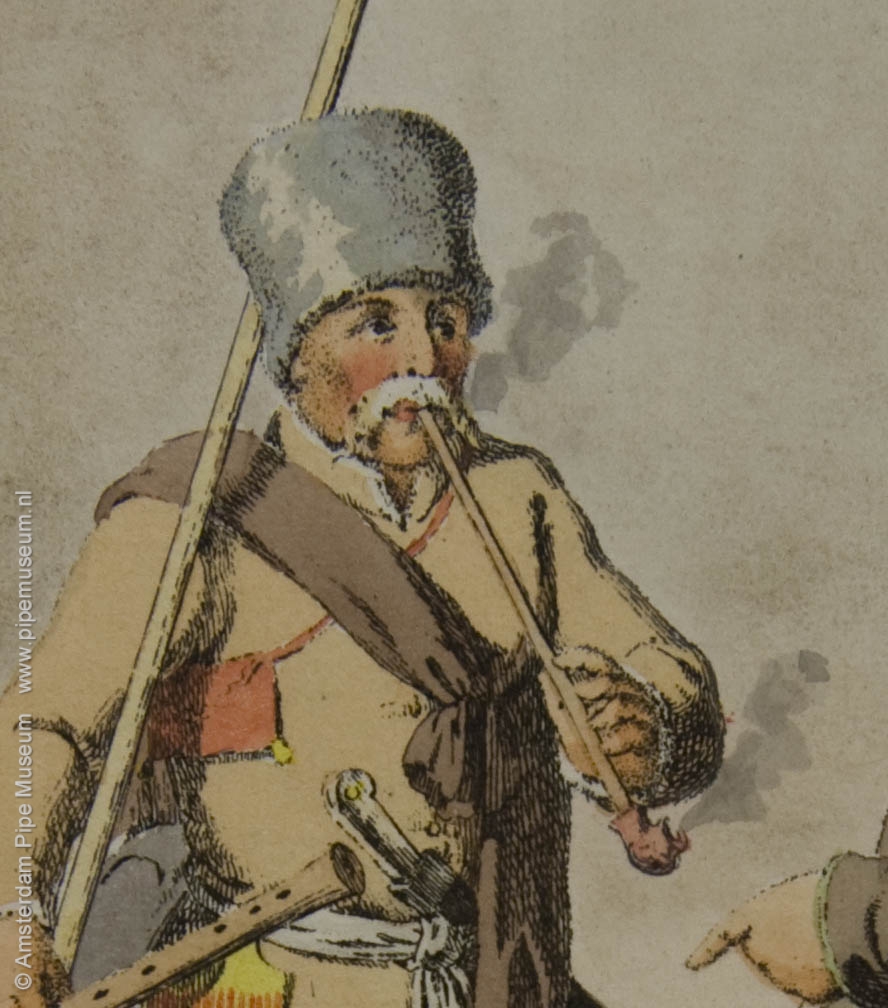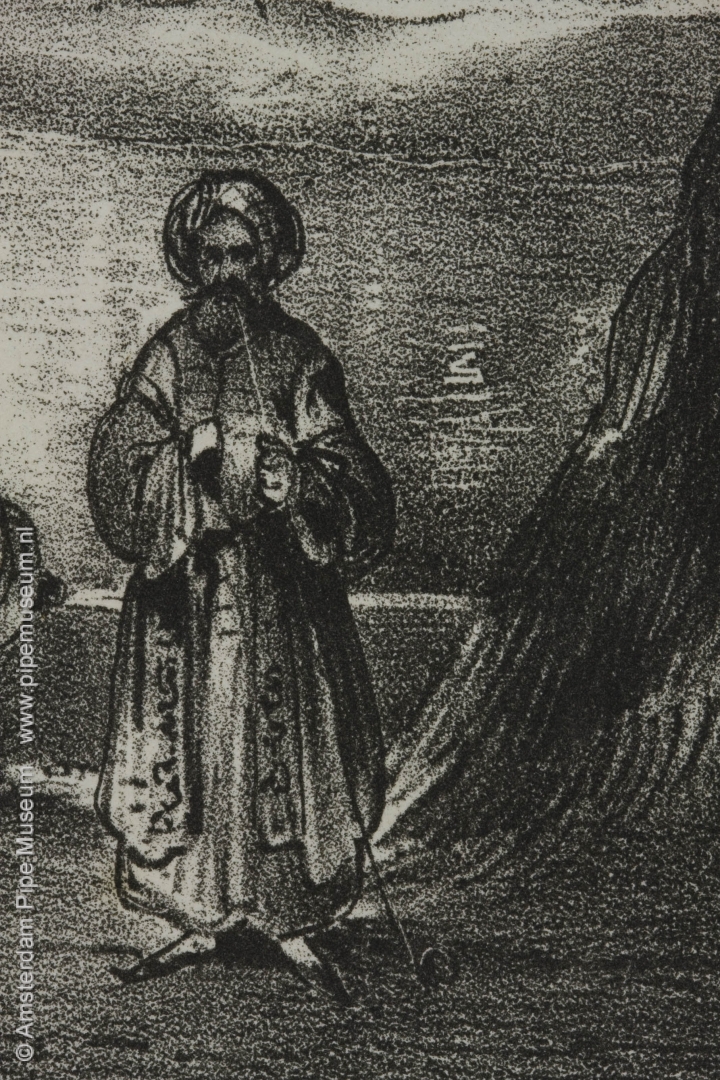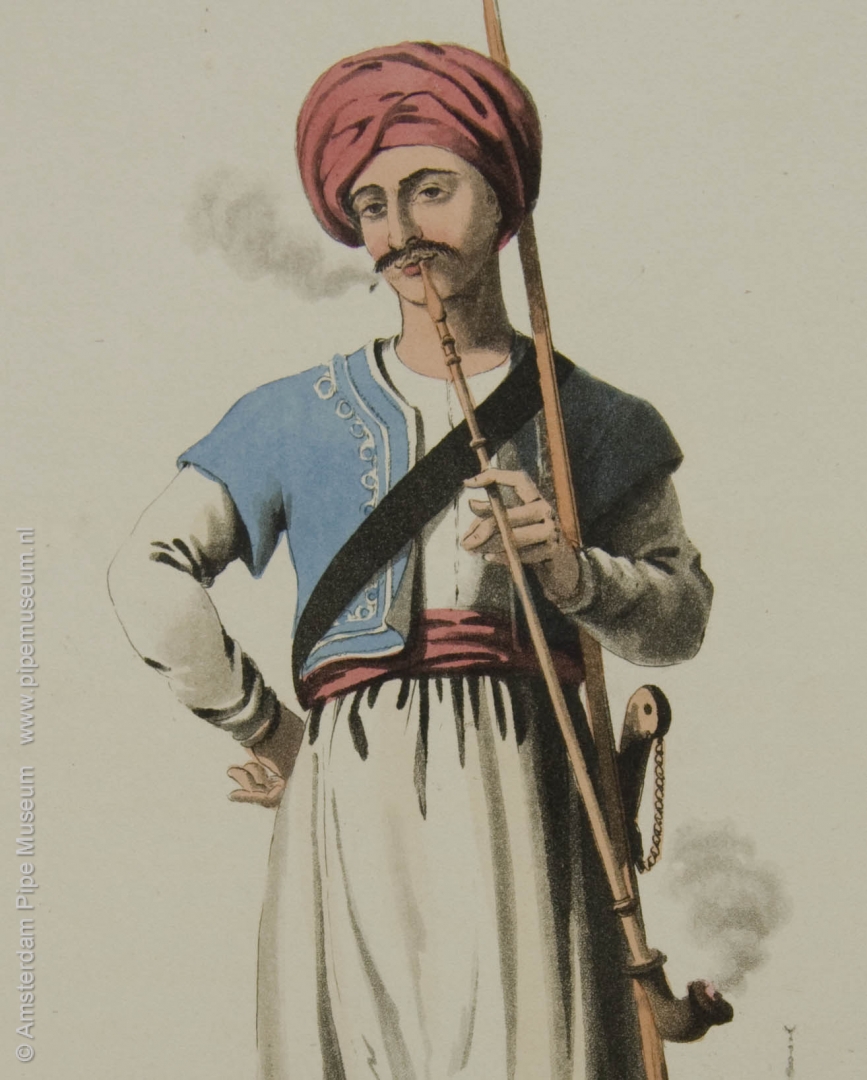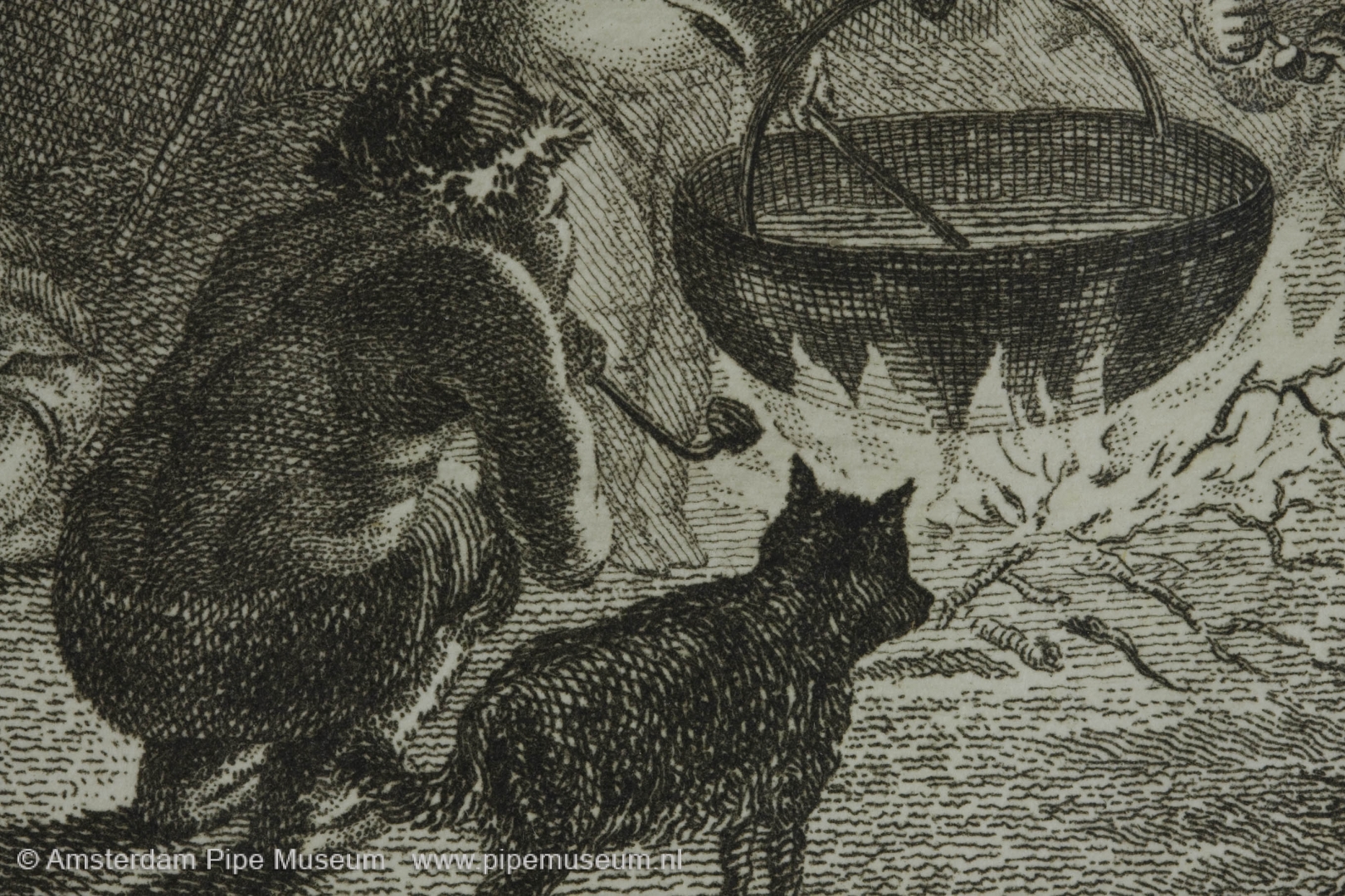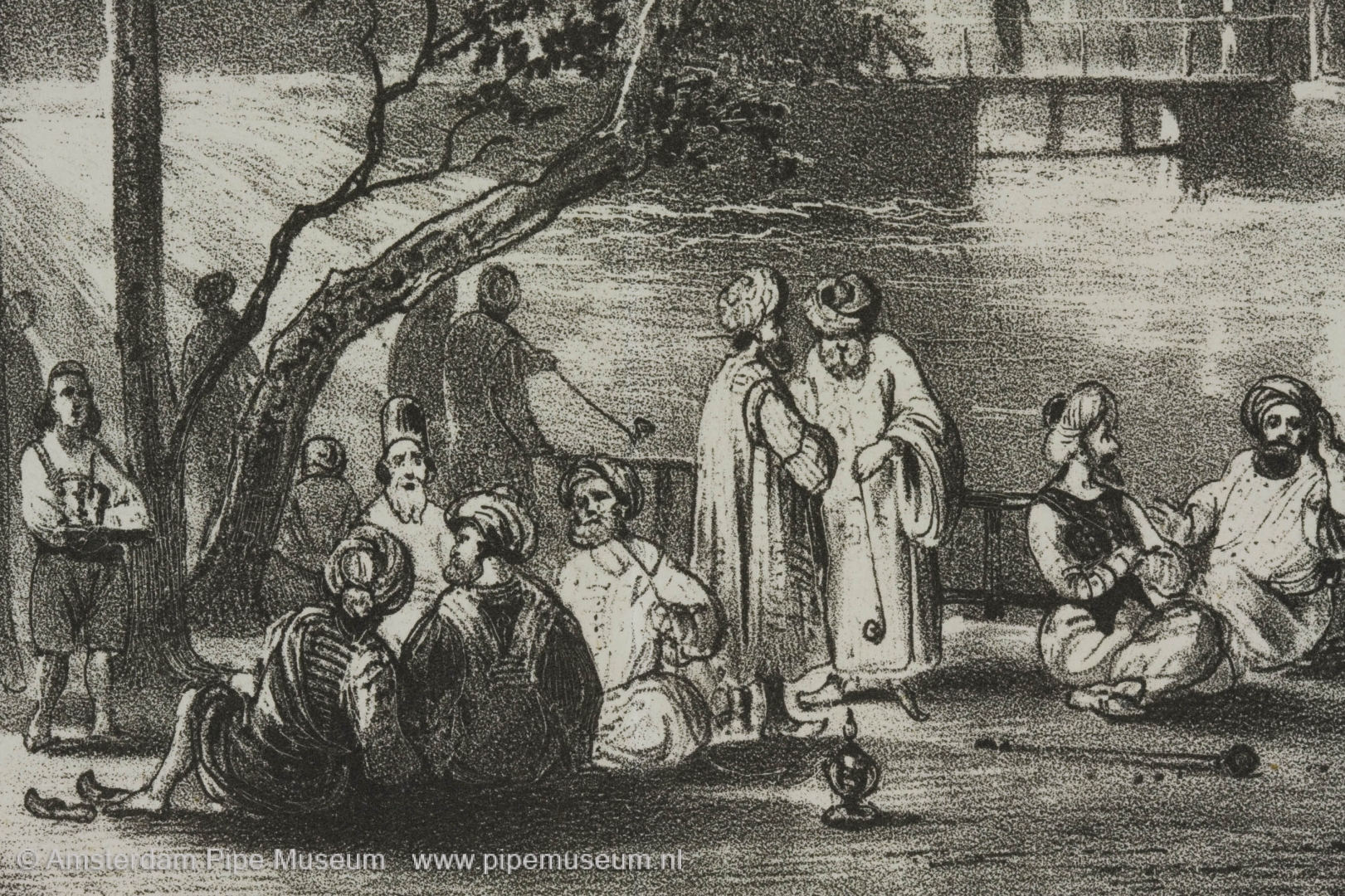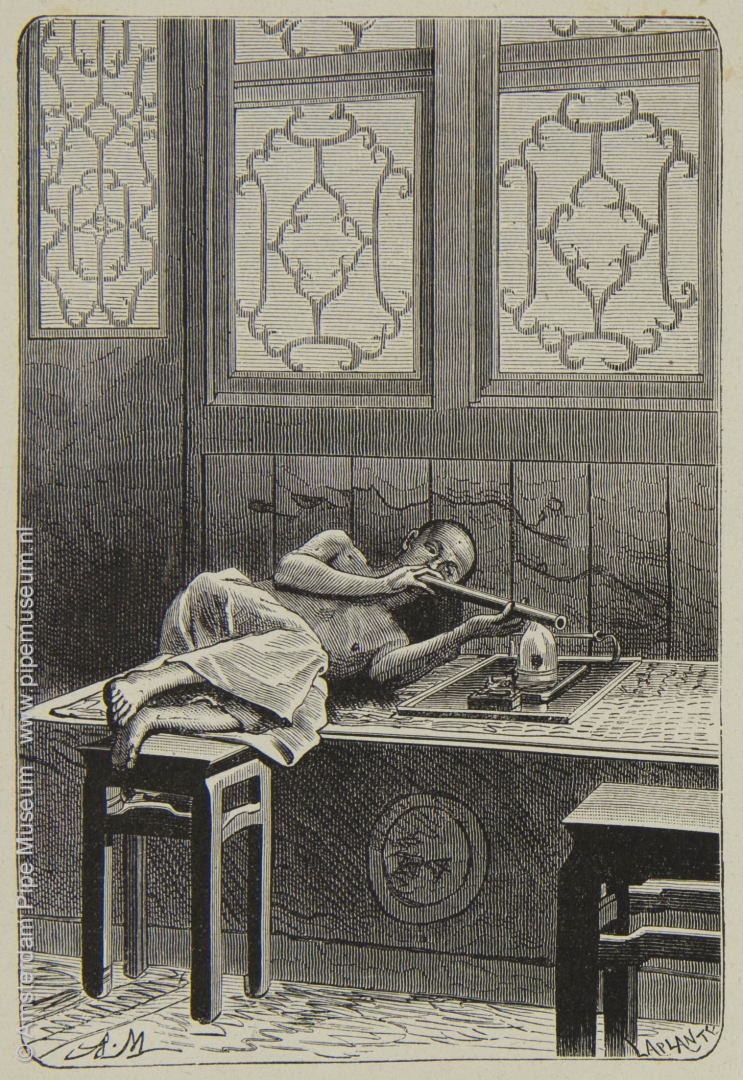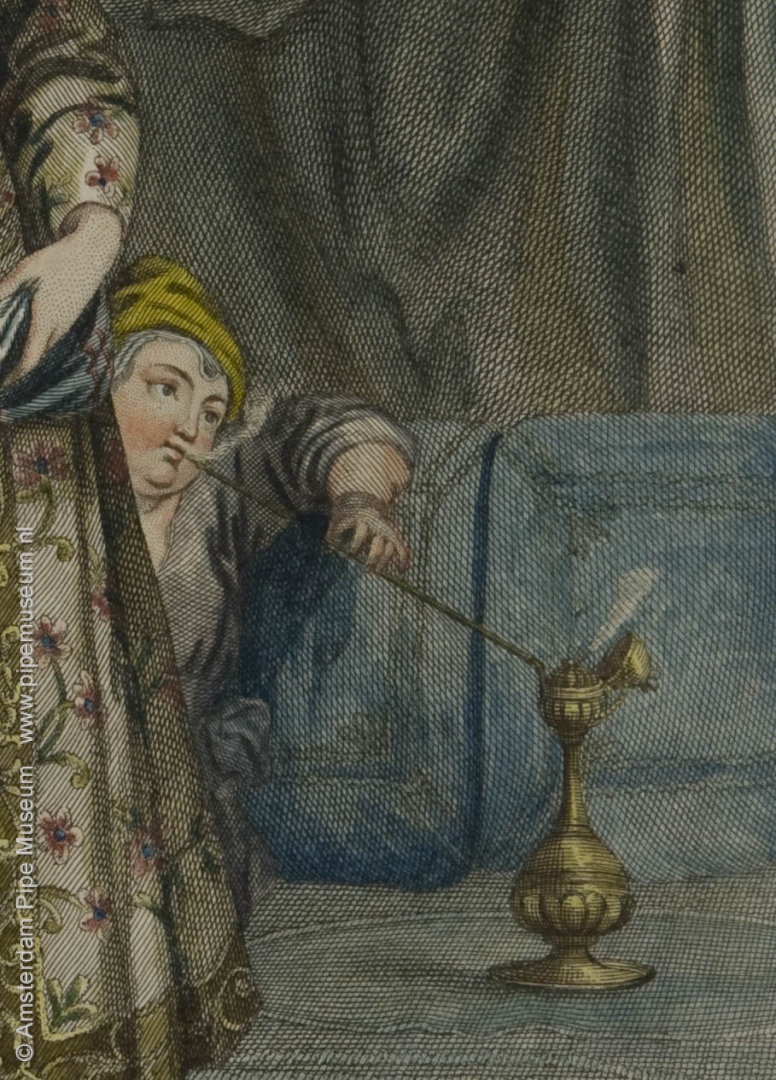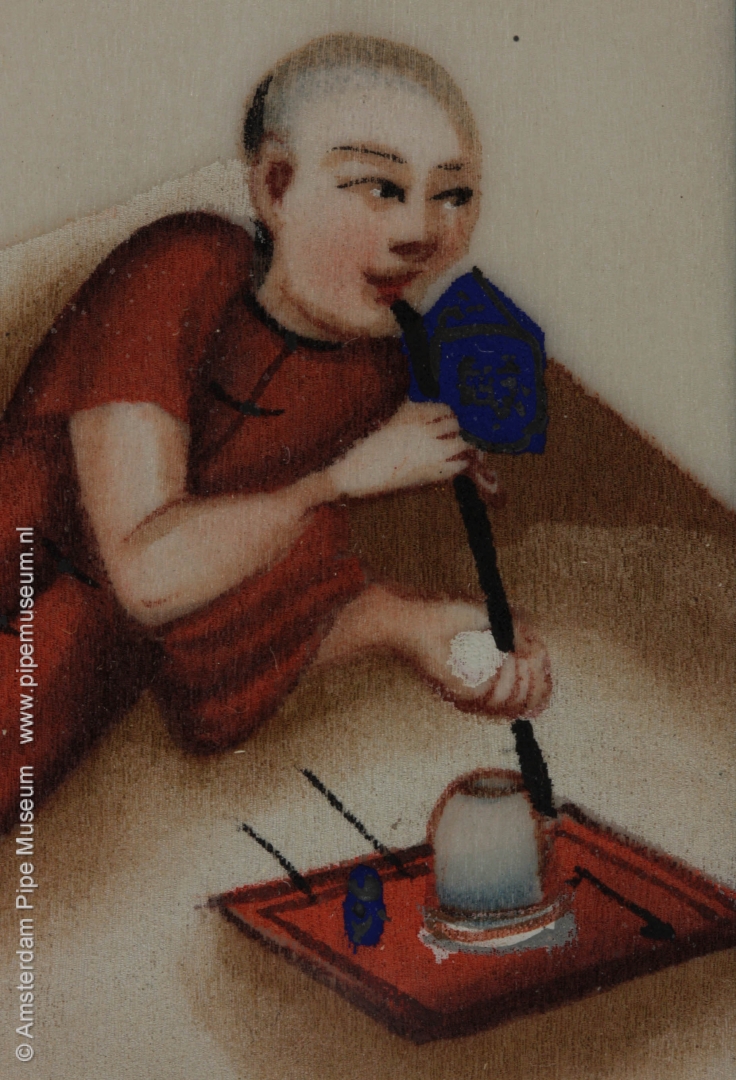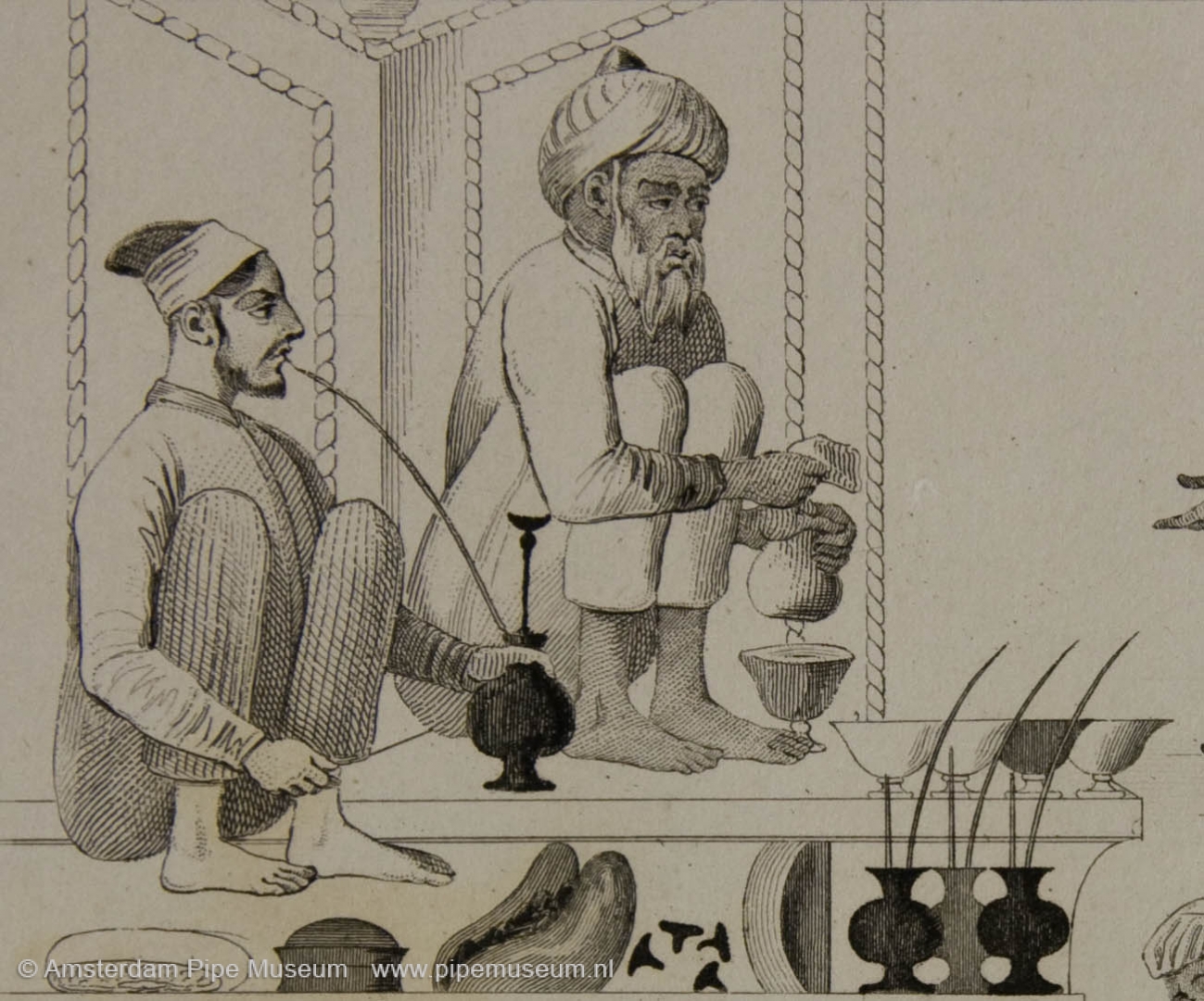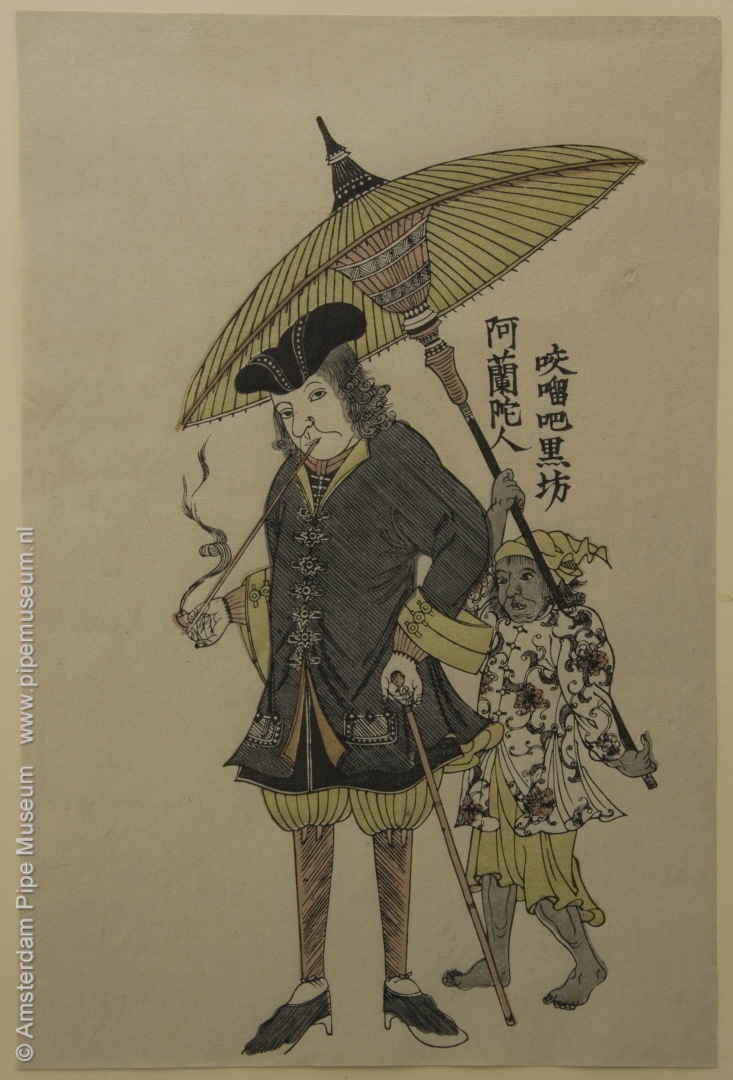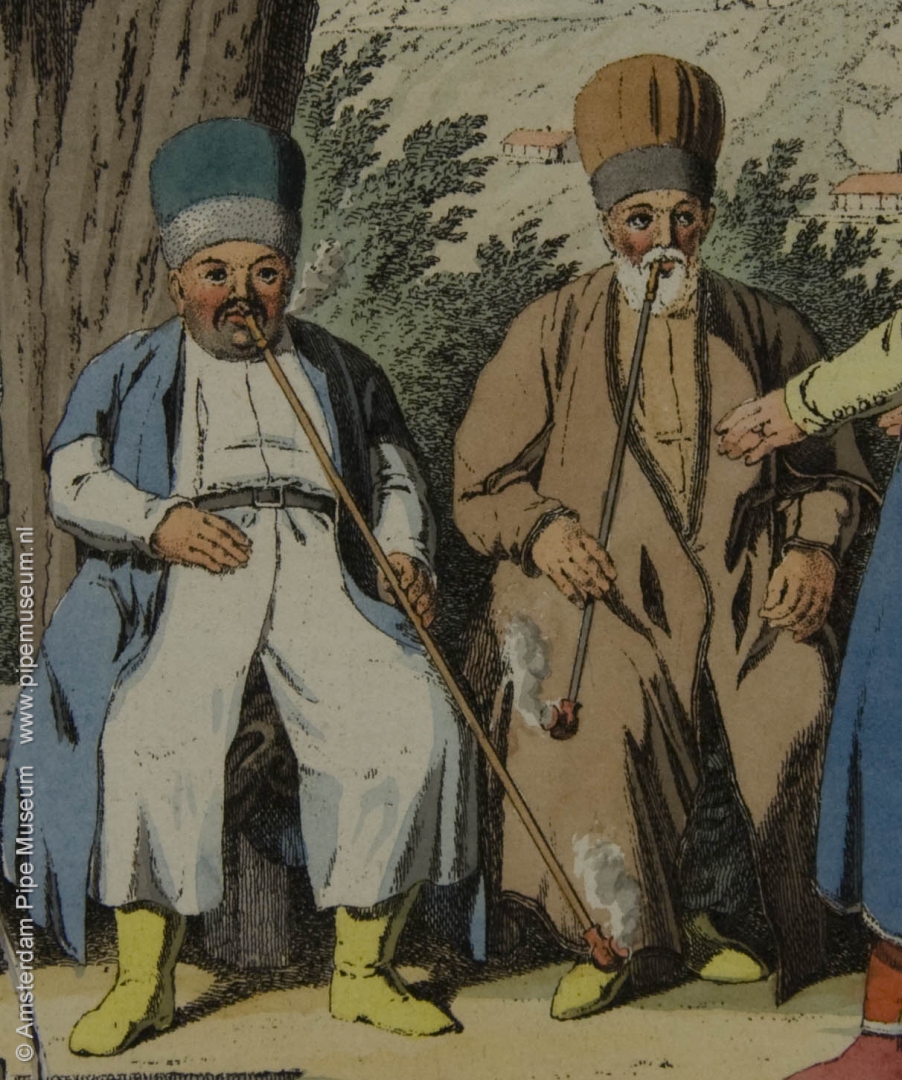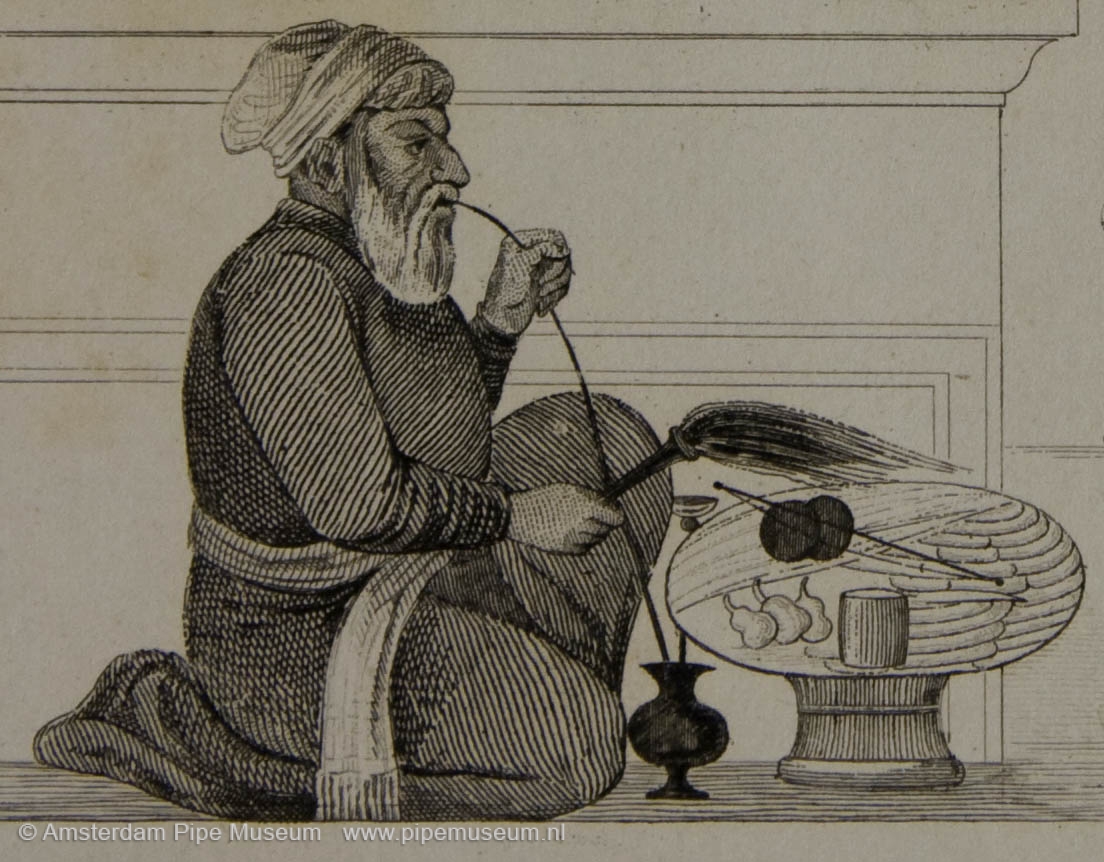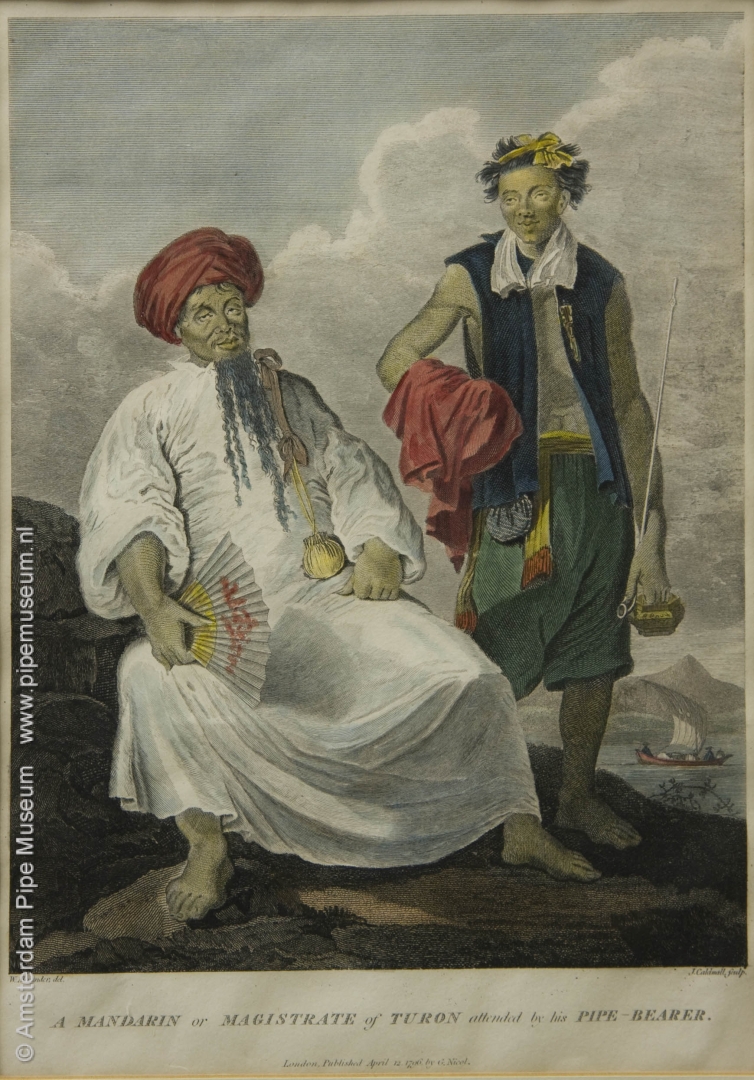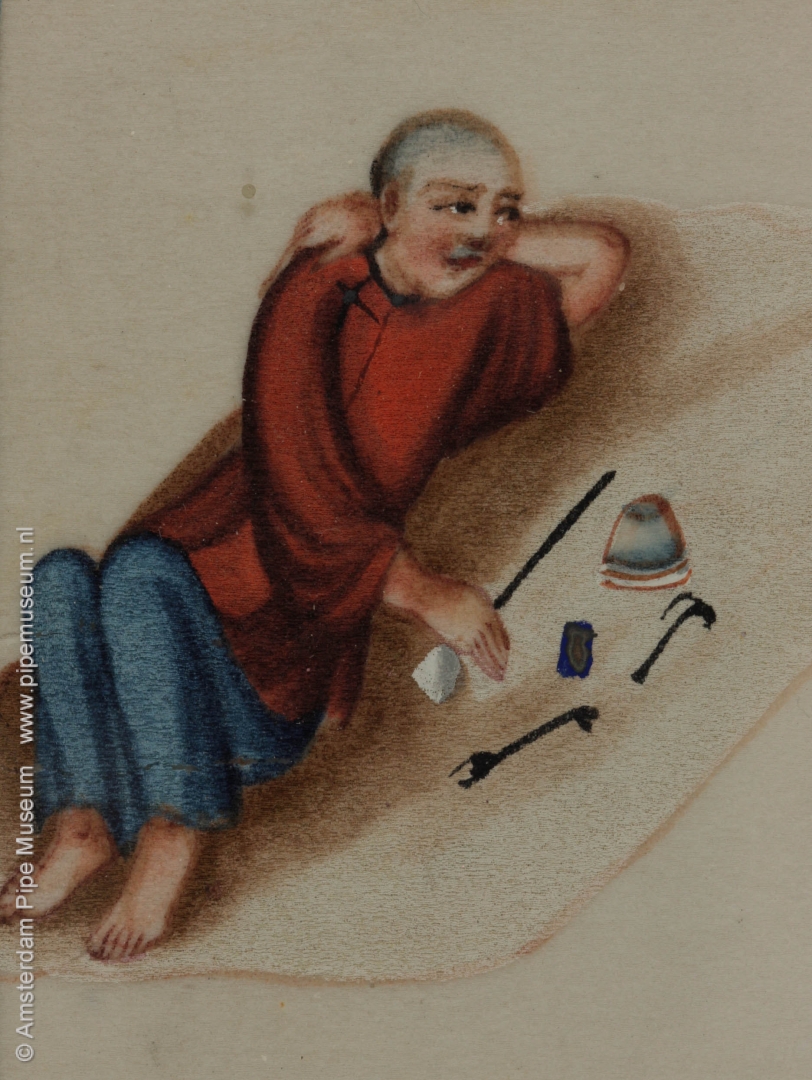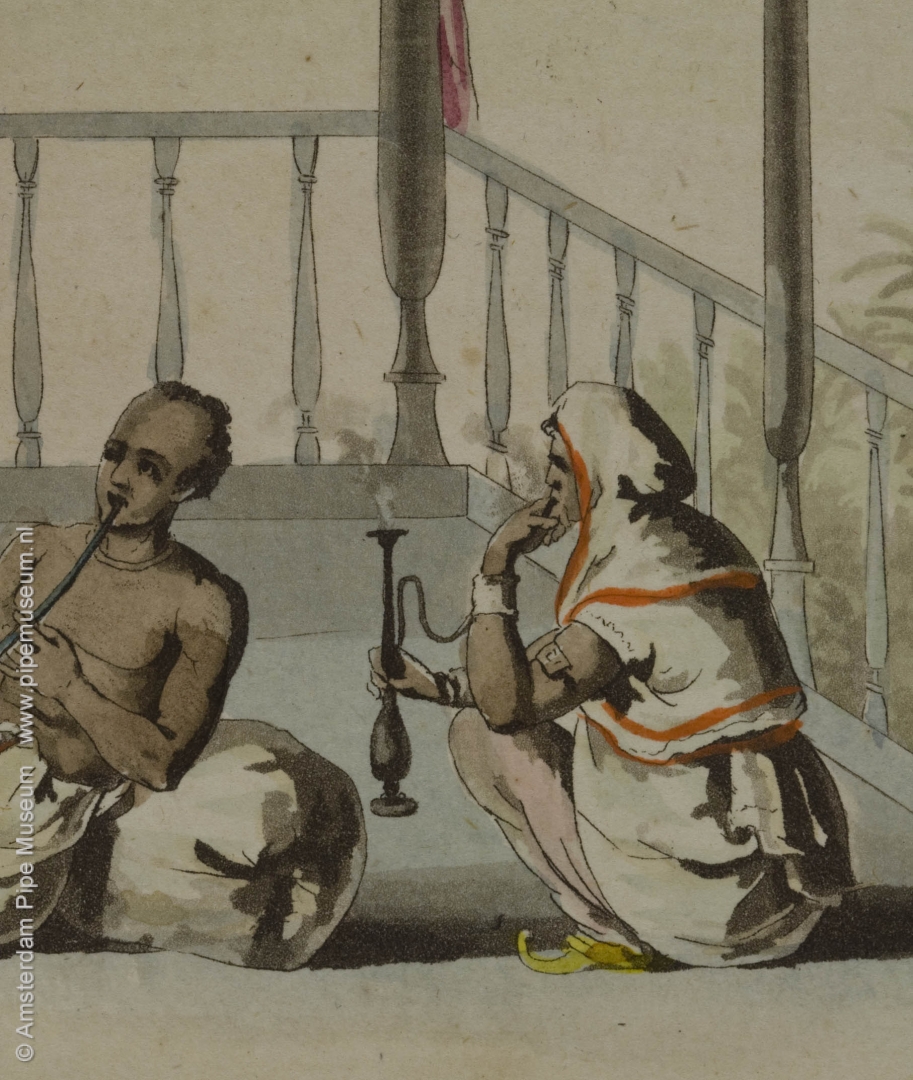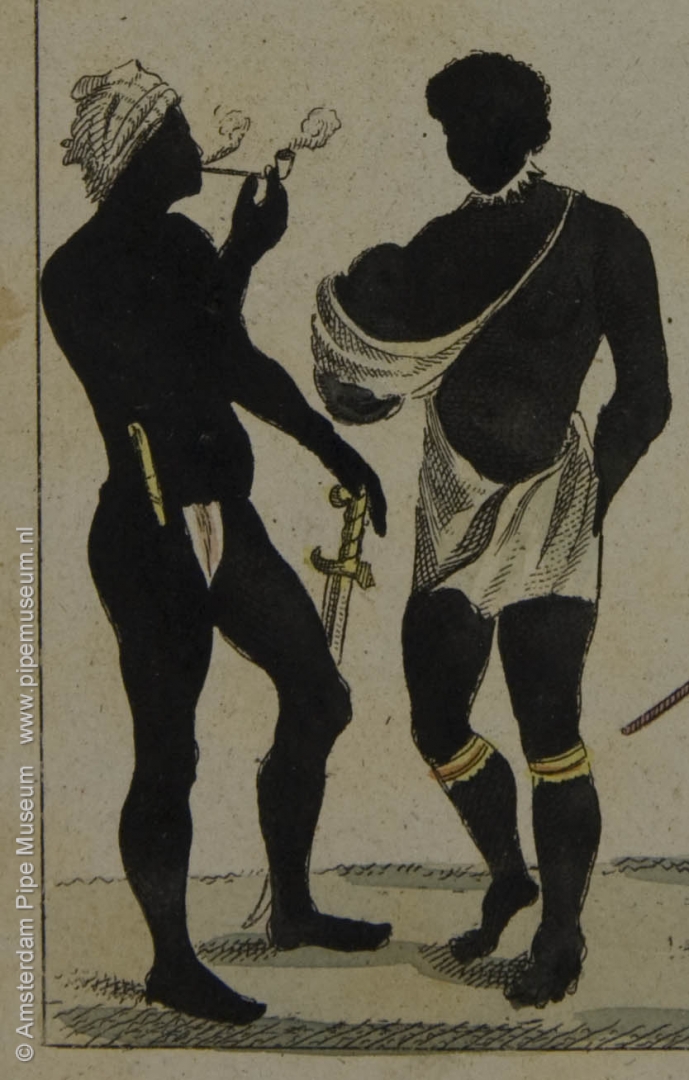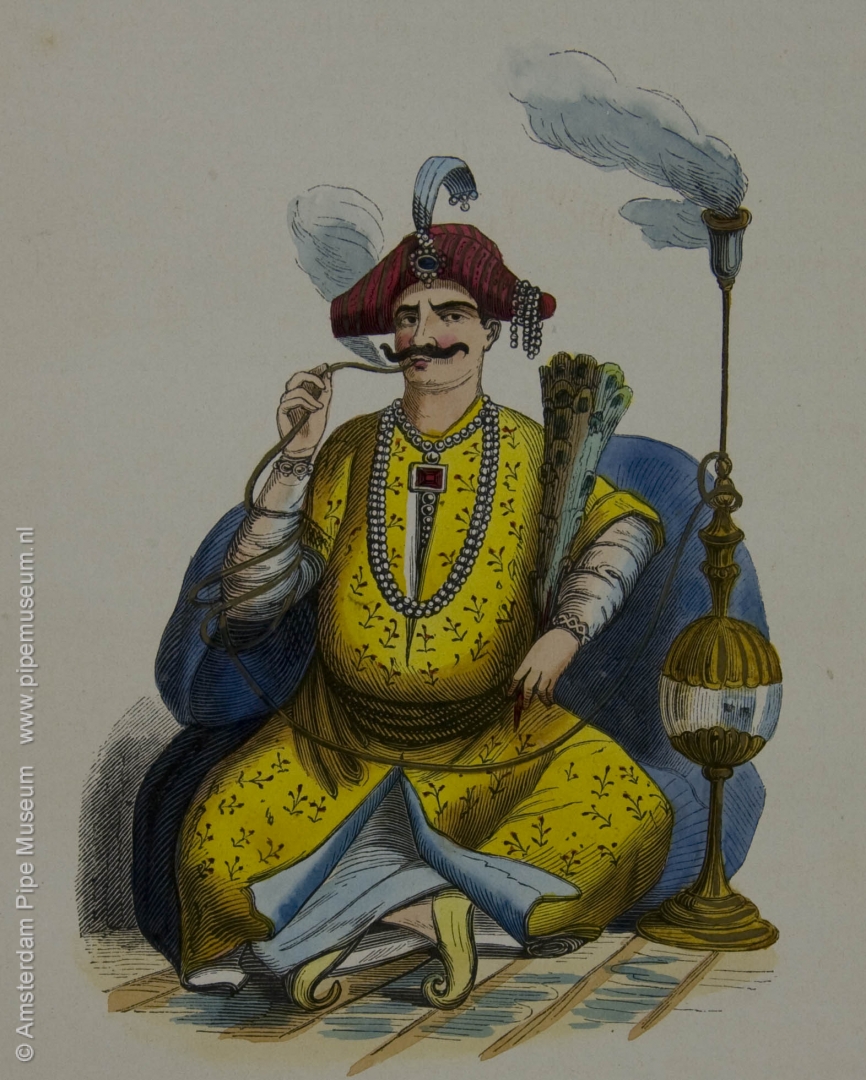Smokers' prints ethnographic
Interest in the customs of other peoples has always existed. Ever since the great explorers, artists have come along to record these exotic habits, including smoking. Prints, drawings and paintings are the best source for getting to know the smoking pipe in its setting, better than travel accounts that merely provide the description.
Tribes and peoples were painstakingly portrayed complete with their favorite tobacco pipe and in their characteristic smoking position. In the silhouette of the smoker, we see that the pipe is often dominant and plays a clear role in the identity of the depicted. For the artist, a tobacco pipe is a rewarding object. It breaks through the silhouette of the sitter and often the pipe gets a better optical result with some extra stem length. Moreover, clouds of smoke give the picture an extra dimension. However, we must be critical in evaluating, since there is always the artistic freedom.
From the mid-nineteenth century it became possible for the upper class to travel through the Near East. This gave an impulse to a new art style, Orientalism. In addition to the traditional smoking pipes, the water pipe takes an important position in these images. Such prints are extra attractive for the Western European market. They show an exotic custom that was hardly known here and became a rewarding topic of conversation. As a matter of fact, the same applies to opium taking. Most Western Europeans only knew this form of smoking from stories and prints. Unfortunately, these opium prints often give an incorrect picture of the opium habit. Many printmakers were well aware but deliberately wanted to emphasize the exotic character to stimulate sales.
In the Indian miniatures we see how the Indians portray themselves as a pipe-smoking man or woman, the same goes for Persia. From Japan we know the somewhat caricatured prints depicting the Dutch merchant with his long Gouda pipe.
